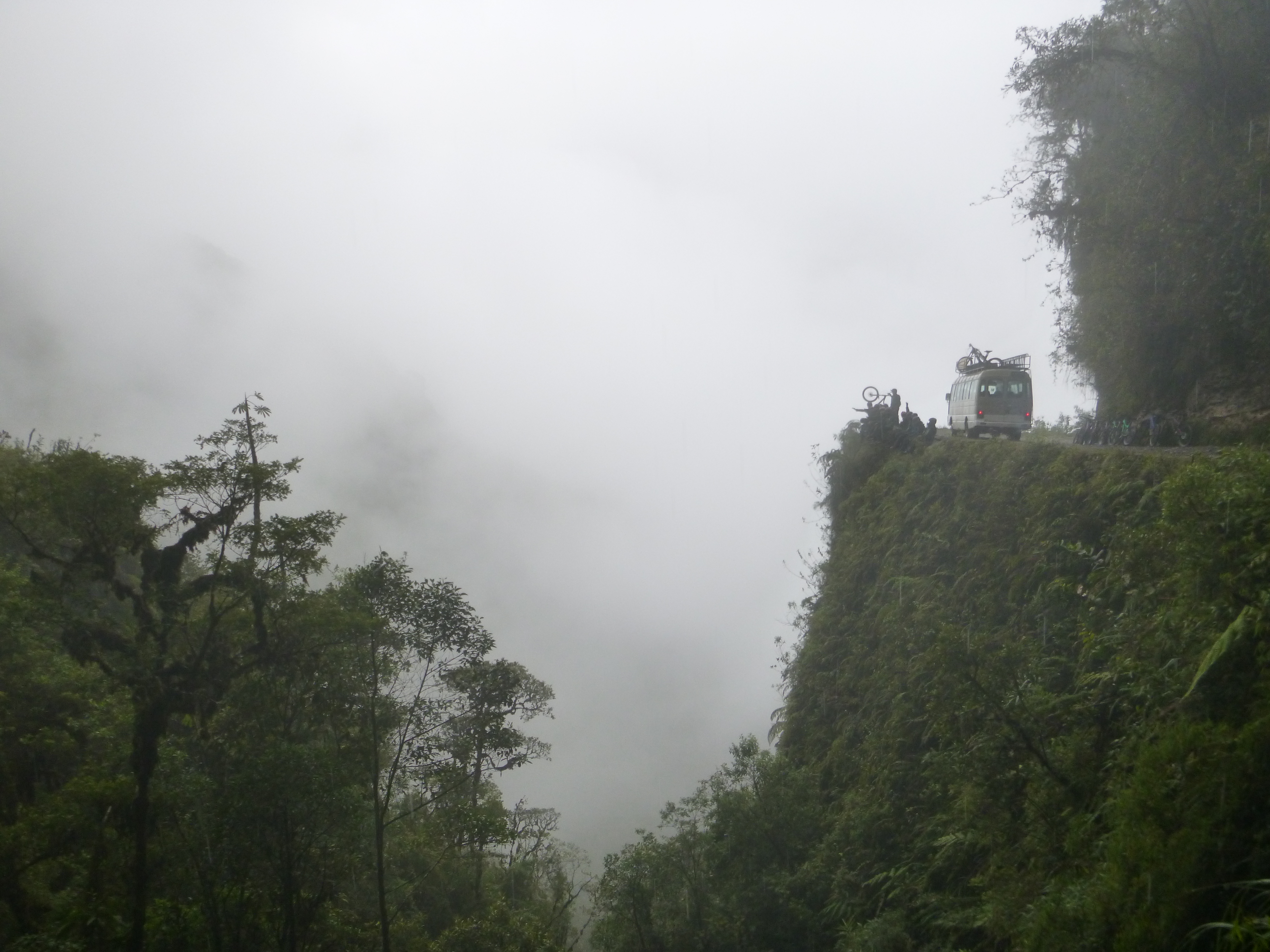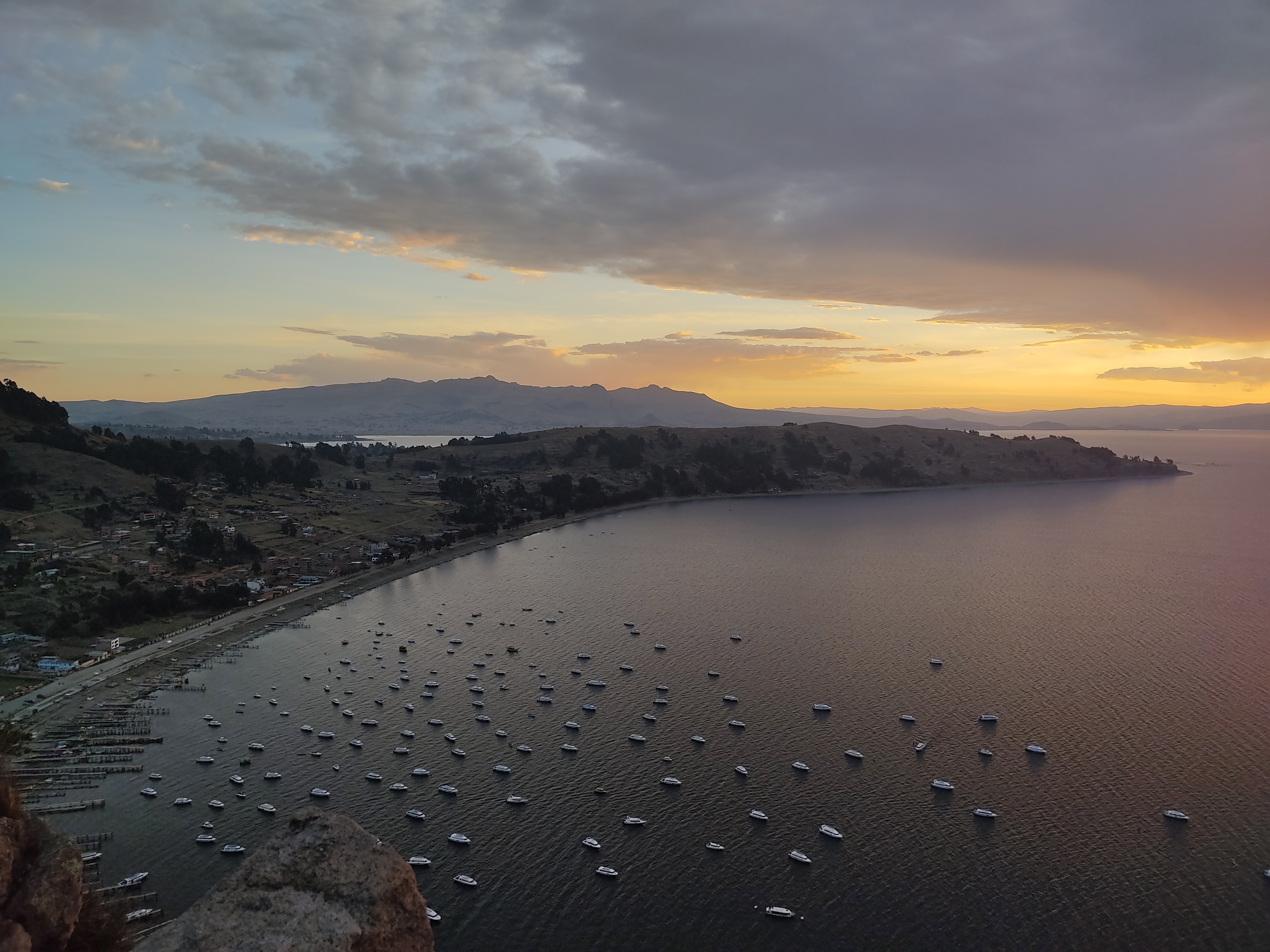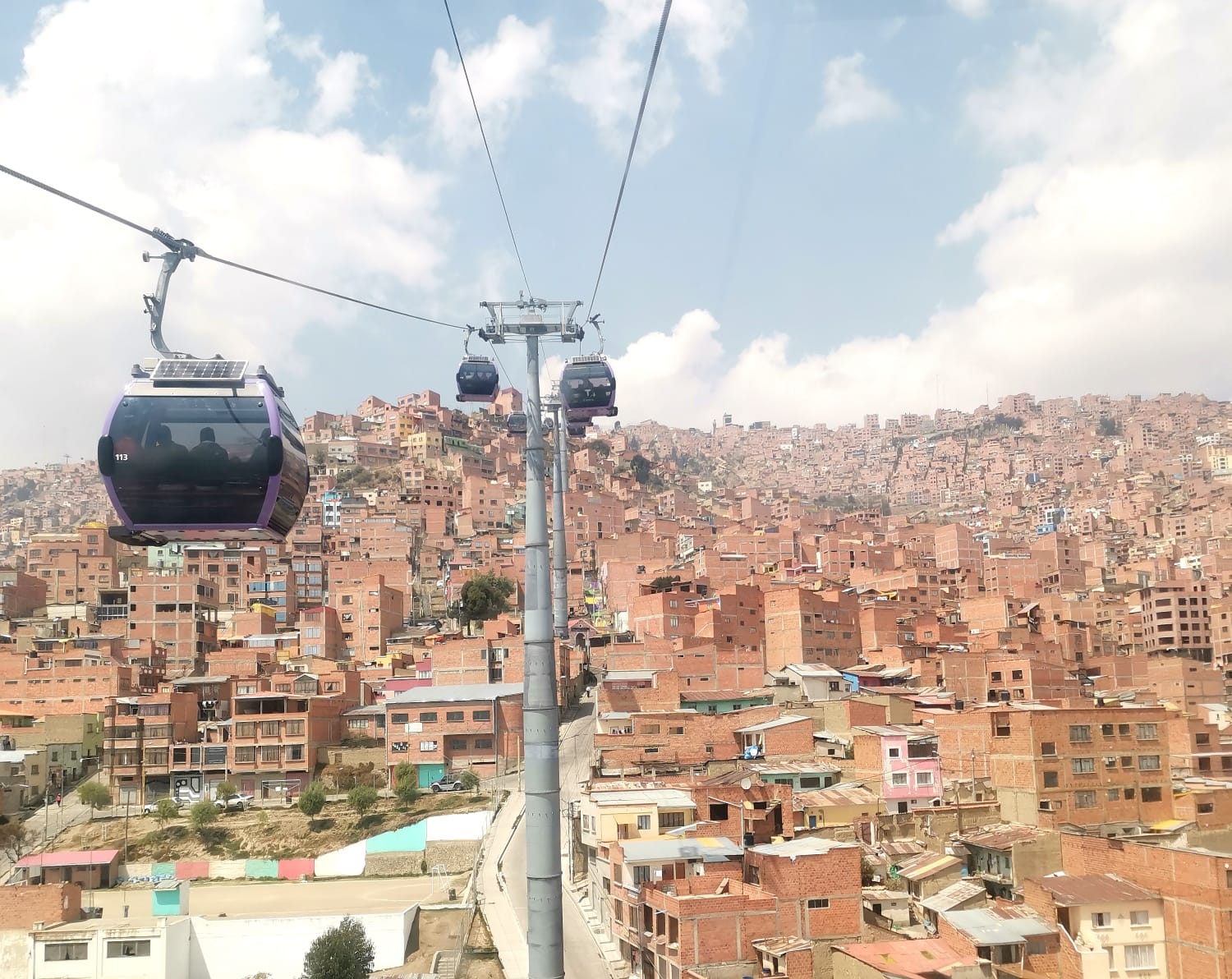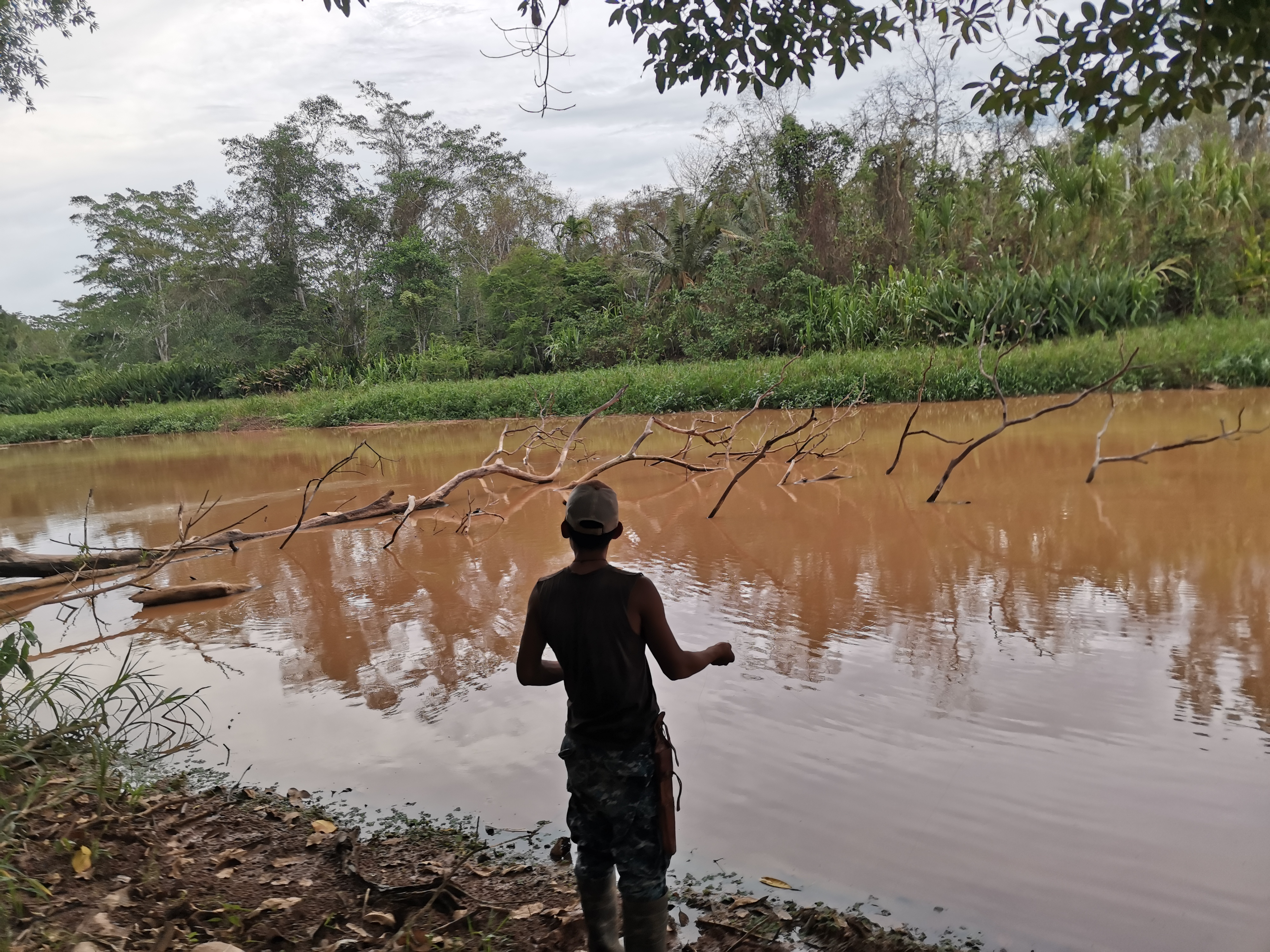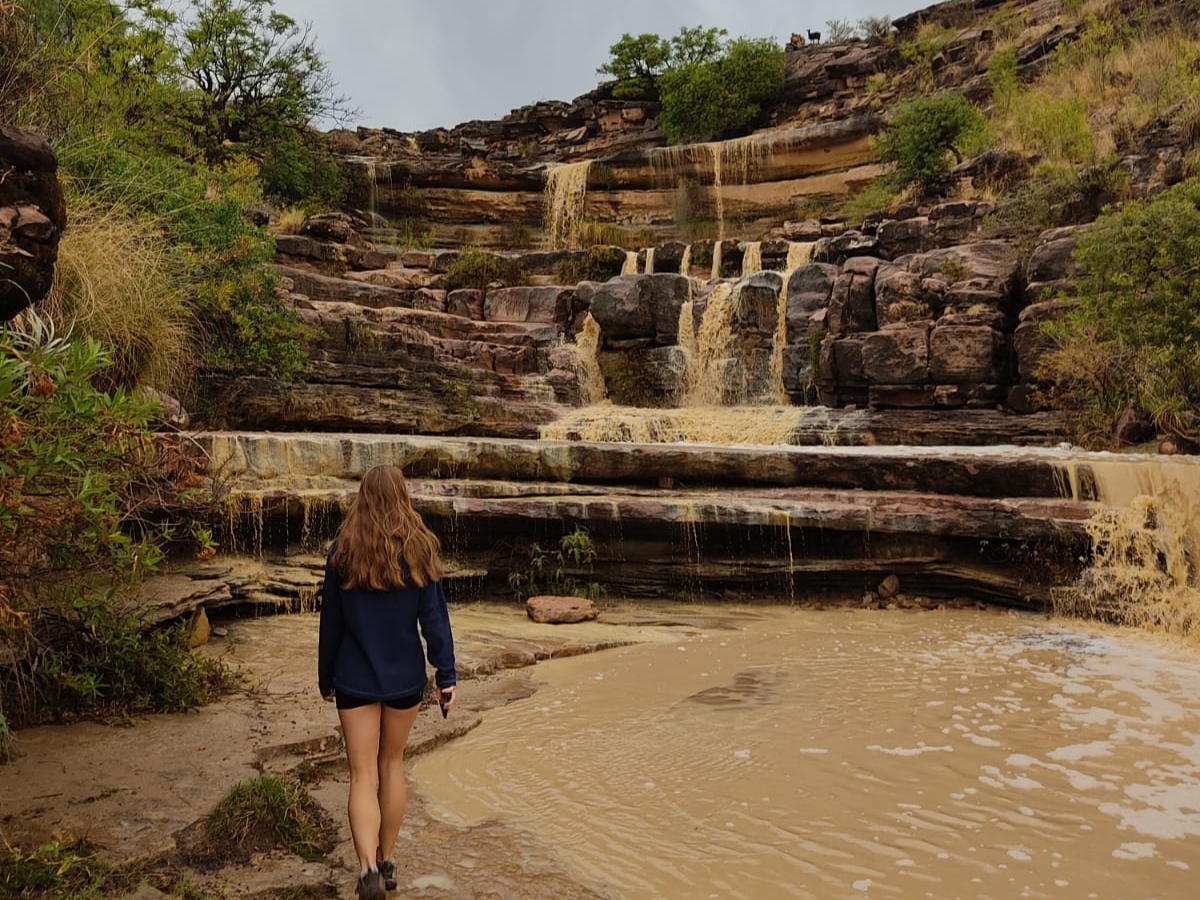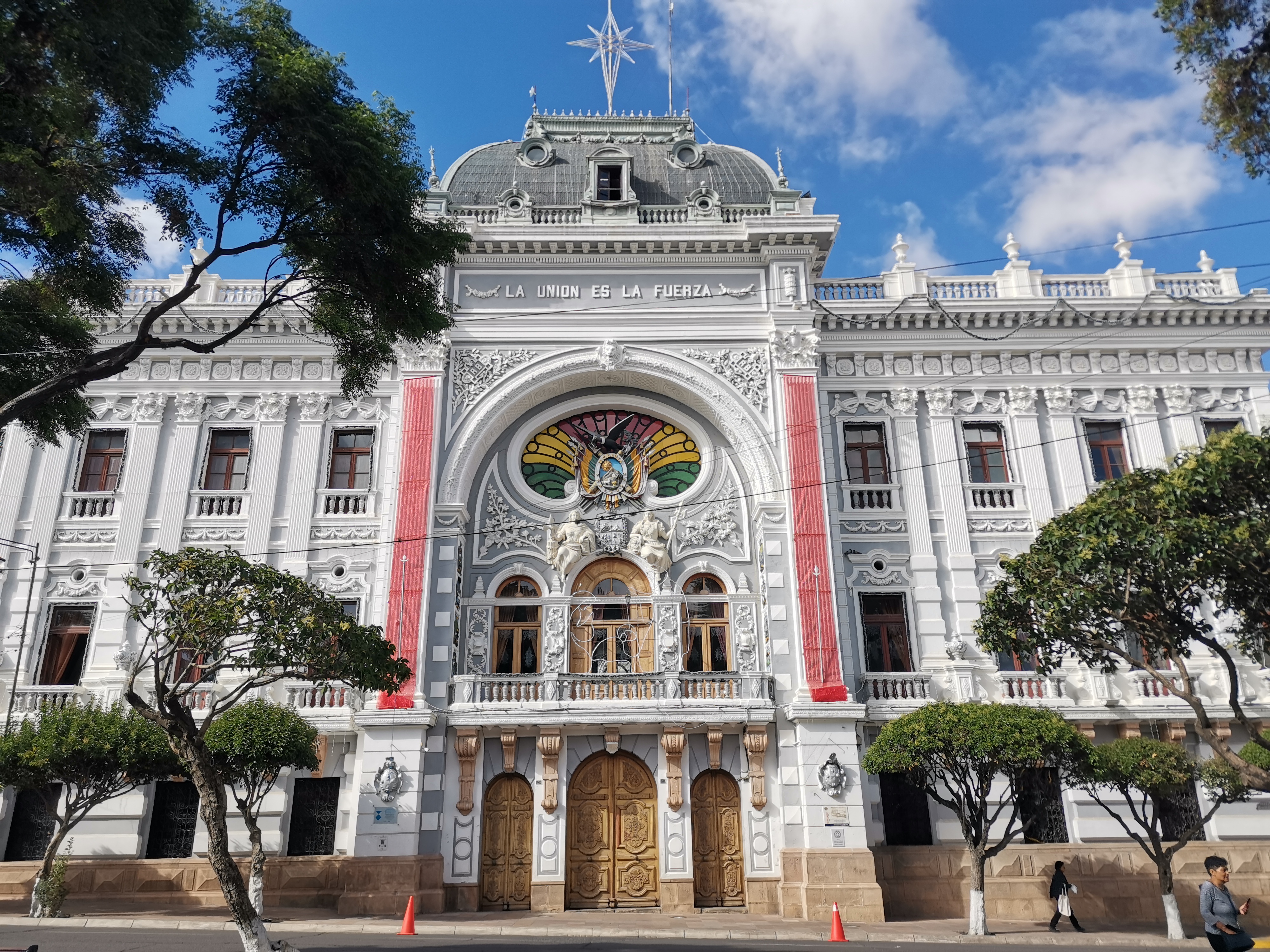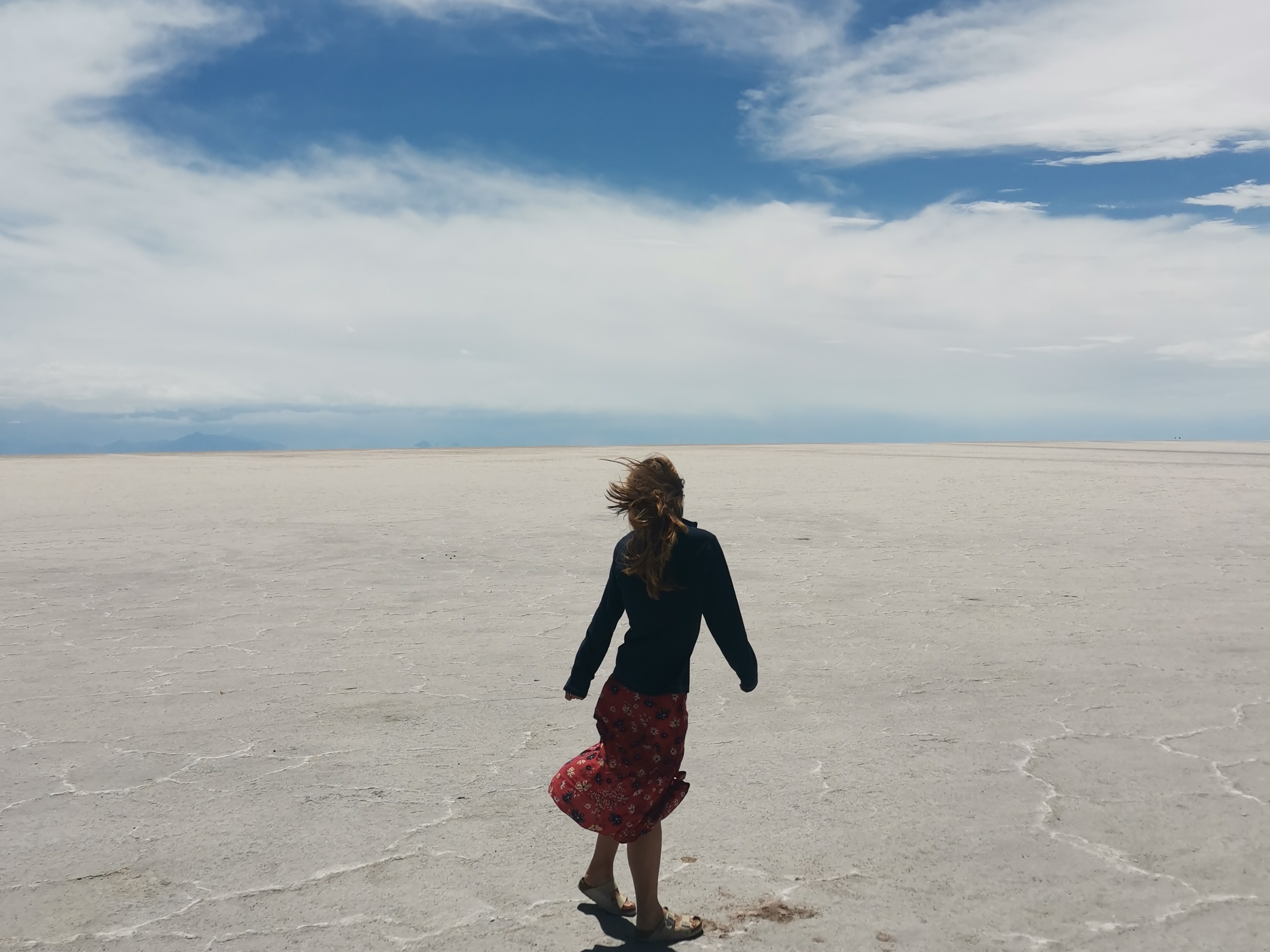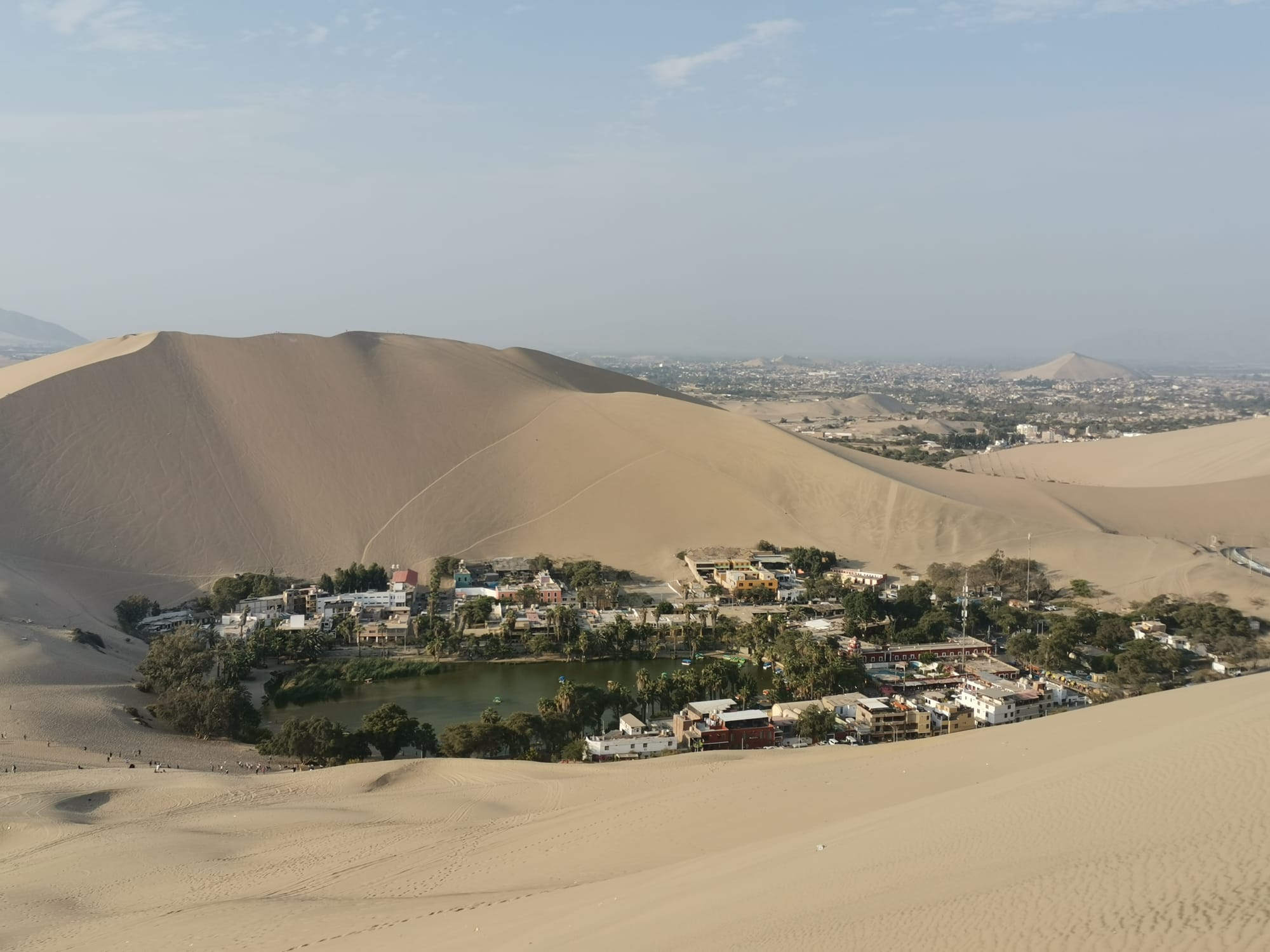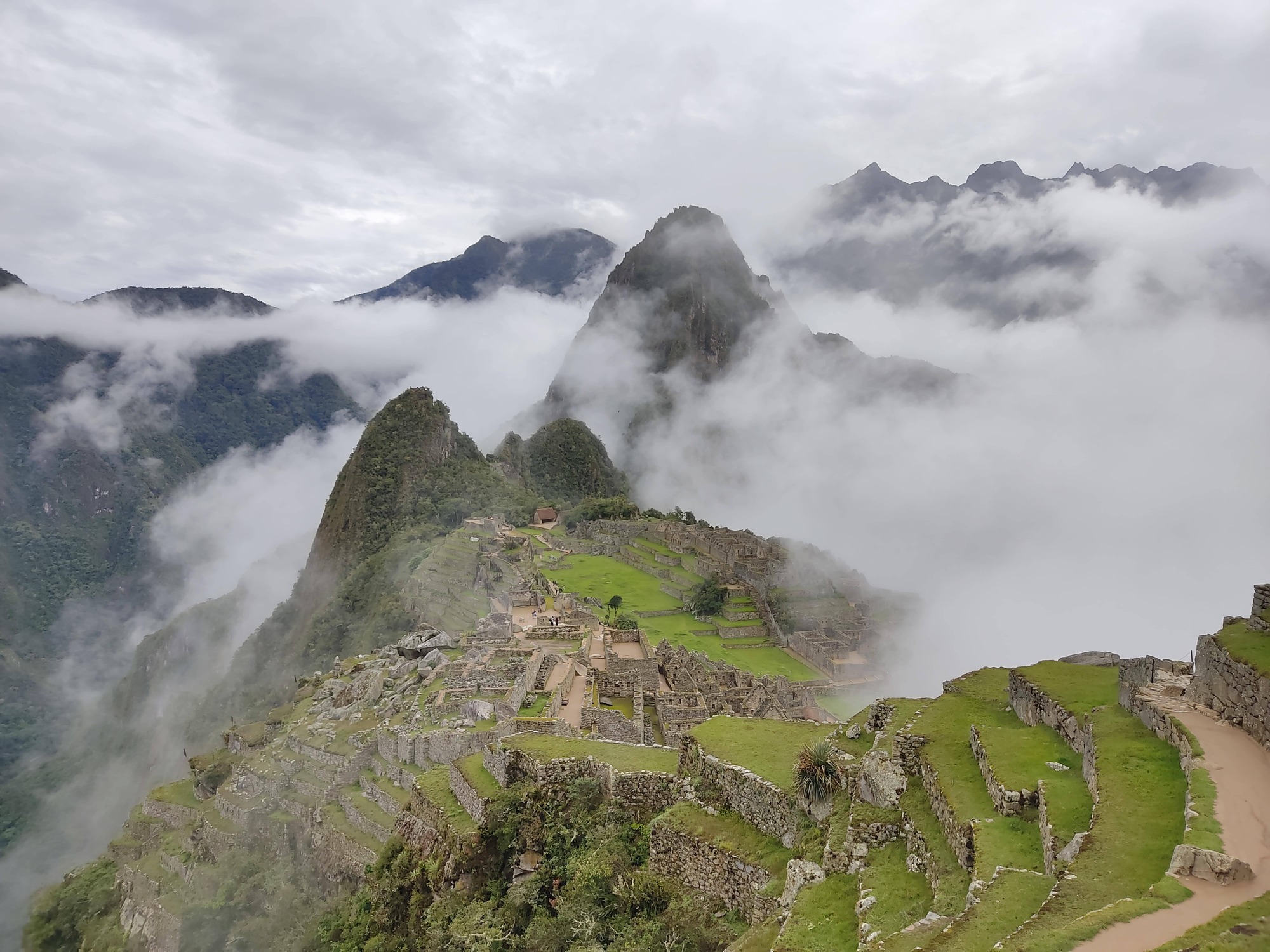Introduction
The second country we visited on our travels through South America was Bolivia. Although our time in Peru had set the bar very high, Bolivia impressed us in every way. In fact, most travellers we have met during our trip agreed that it was the place that surprised them the most. The locals are incredibly friendly and always willing to help out, even if you can't speak much Spanish! Every city in Bolivia is packed with bustling markets, colourful neighbourhoods, and a certain Bolivian buzz that was hard to find anywhere else. The large indigenous population display their unfiltered customs and traditions, not in any way for the benefit of tourists, which provides an authentic taste of their rich South American heritage. Beyond the cities, Bolivia is home to incredible landscapes, from towering mountains and steep rocky valleys to the unbelievable salt flats. The jungles in the north are bursting with biodiversity, and the people who live there come with their own traditions, culture, and stories. Bolivia ticks all the boxes, and the mix of the lively cities, varied landscapes, intriguing culture and incredibly cheap prices makes it a real treasure in the heart of South America.
Our Route through Bolivia
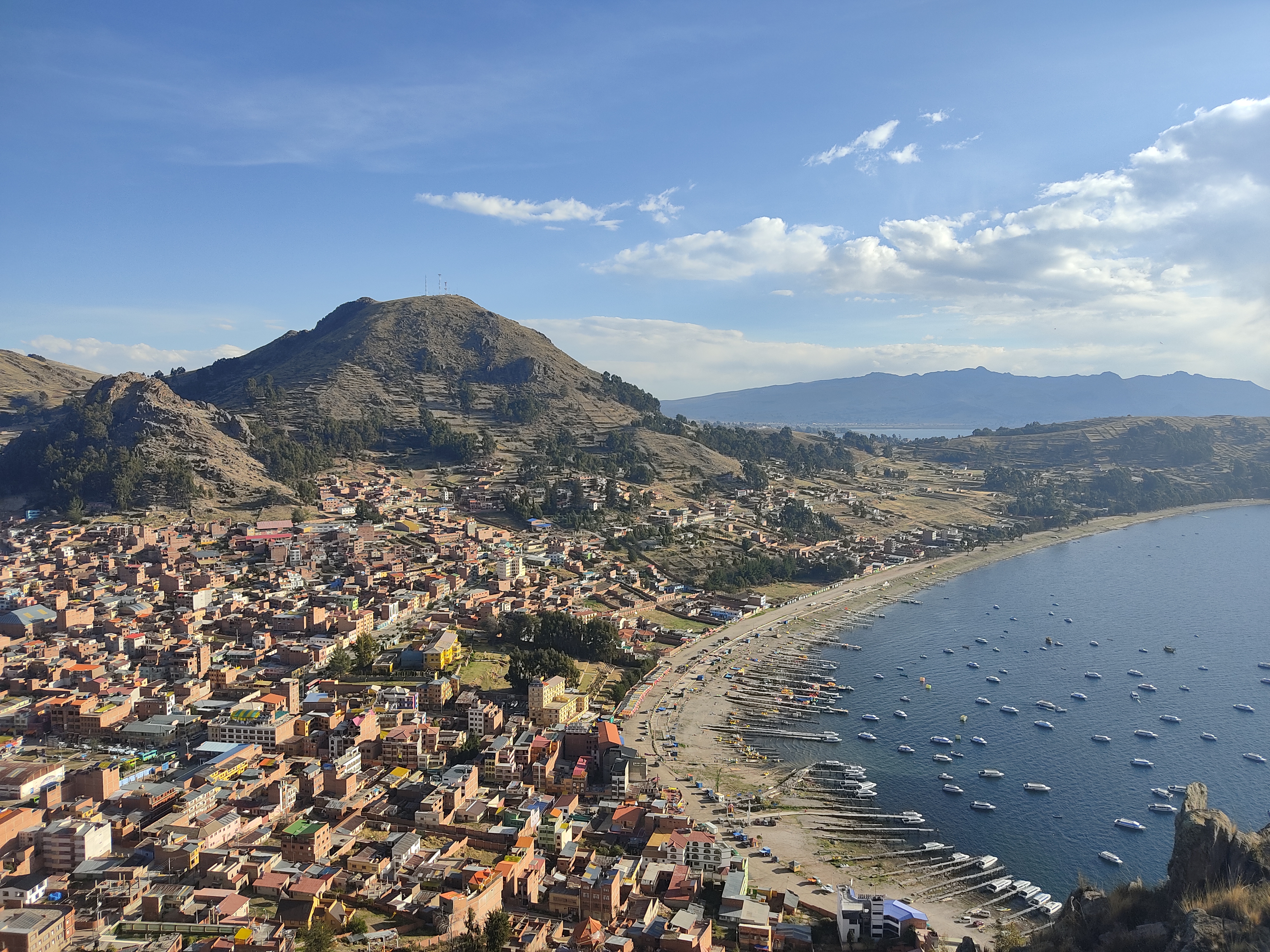 Only 5km from the border with Peru, we get our first taste of Bolivia in Copacabana, the town on the shores of lake Titicaca.
La Paz
Only 5km from the border with Peru, we get our first taste of Bolivia in Copacabana, the town on the shores of lake Titicaca.
La Paz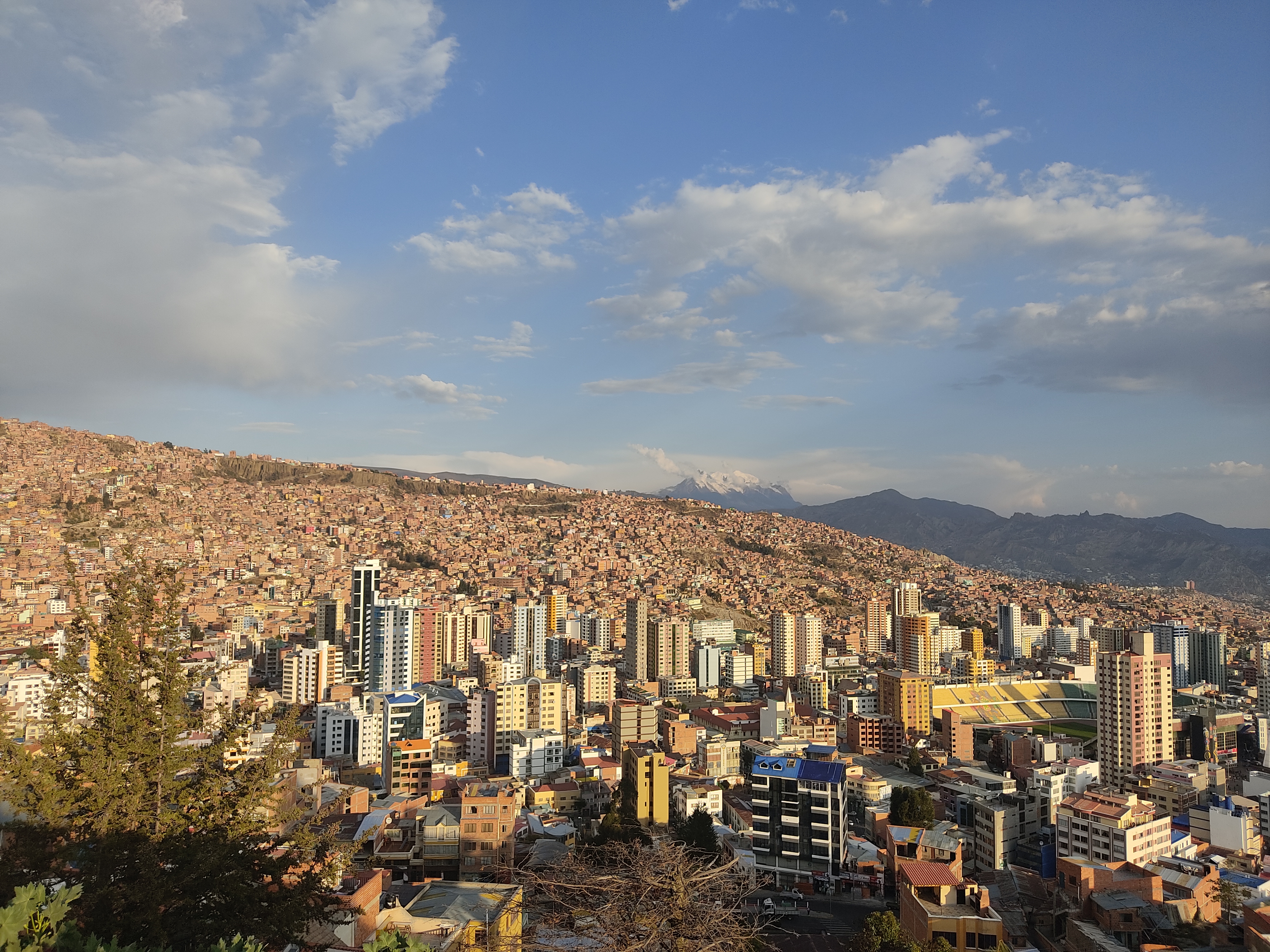 La Paz is Bolivia's 'administrative capital', and is known for its hustle-and-bustle and unique public transport.
Rurrenabaque
La Paz is Bolivia's 'administrative capital', and is known for its hustle-and-bustle and unique public transport.
Rurrenabaque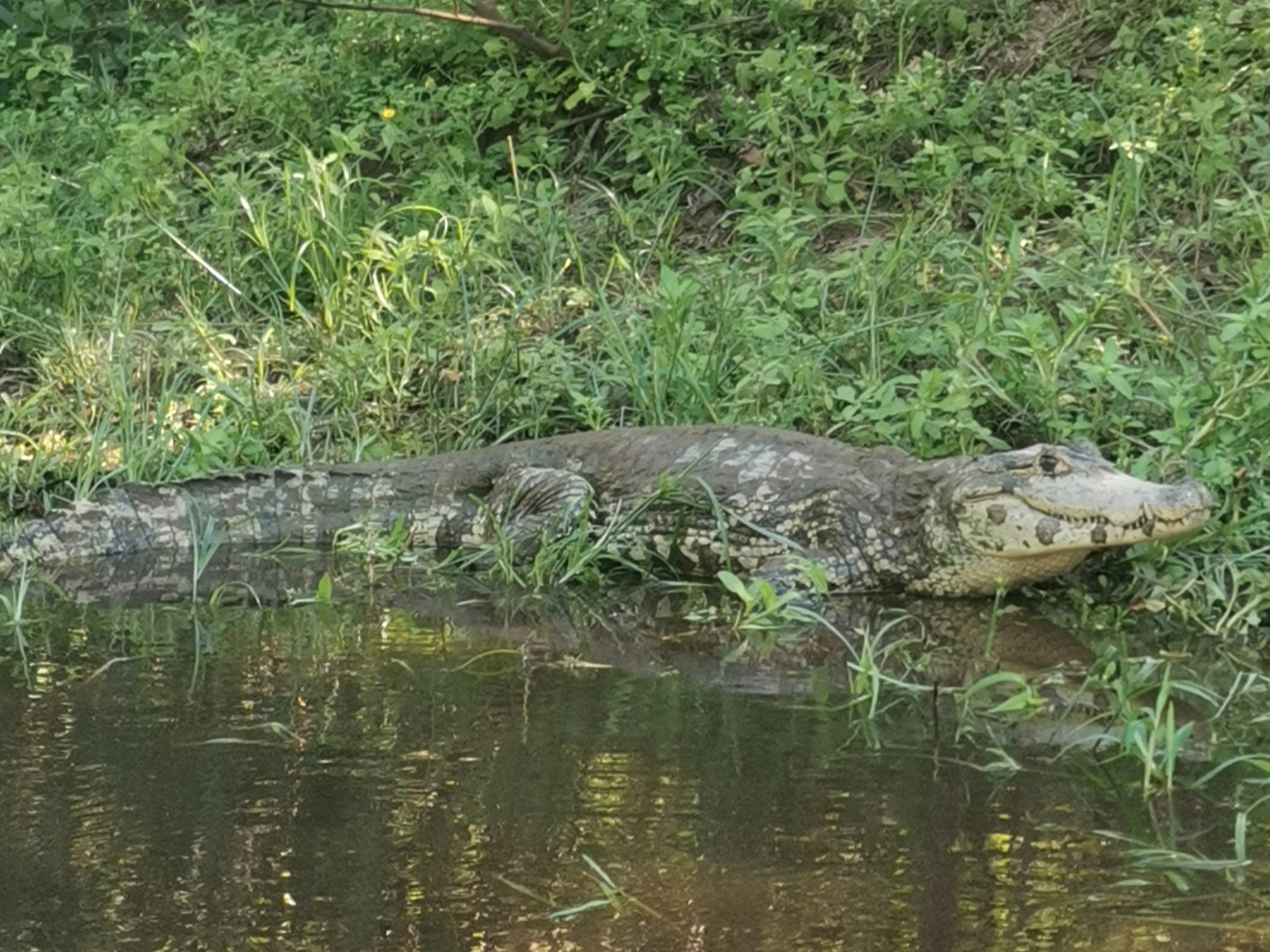 Rurrenabaque is the gateway to Bolivia's Amazon, with a hot and sweaty climate and lots of jungle wildlife.
Cochabamba
Rurrenabaque is the gateway to Bolivia's Amazon, with a hot and sweaty climate and lots of jungle wildlife.
Cochabamba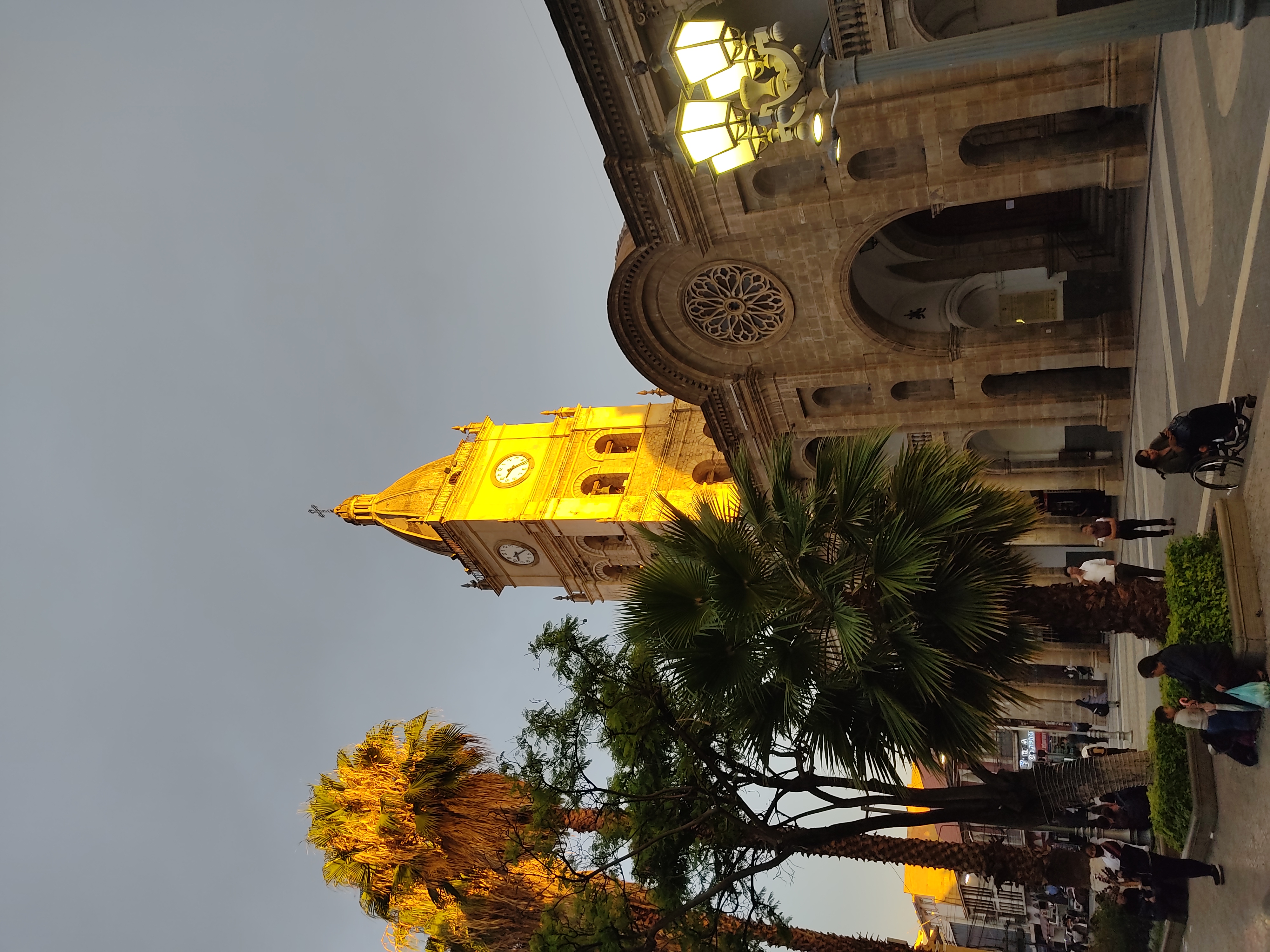 In the center of Bolivia, Cochabamba is usually skipped by most tourists, but it is the 4th largest city in Bolivia and is adjacent to the incredible Torotoro national park.
Sucre
In the center of Bolivia, Cochabamba is usually skipped by most tourists, but it is the 4th largest city in Bolivia and is adjacent to the incredible Torotoro national park.
Sucre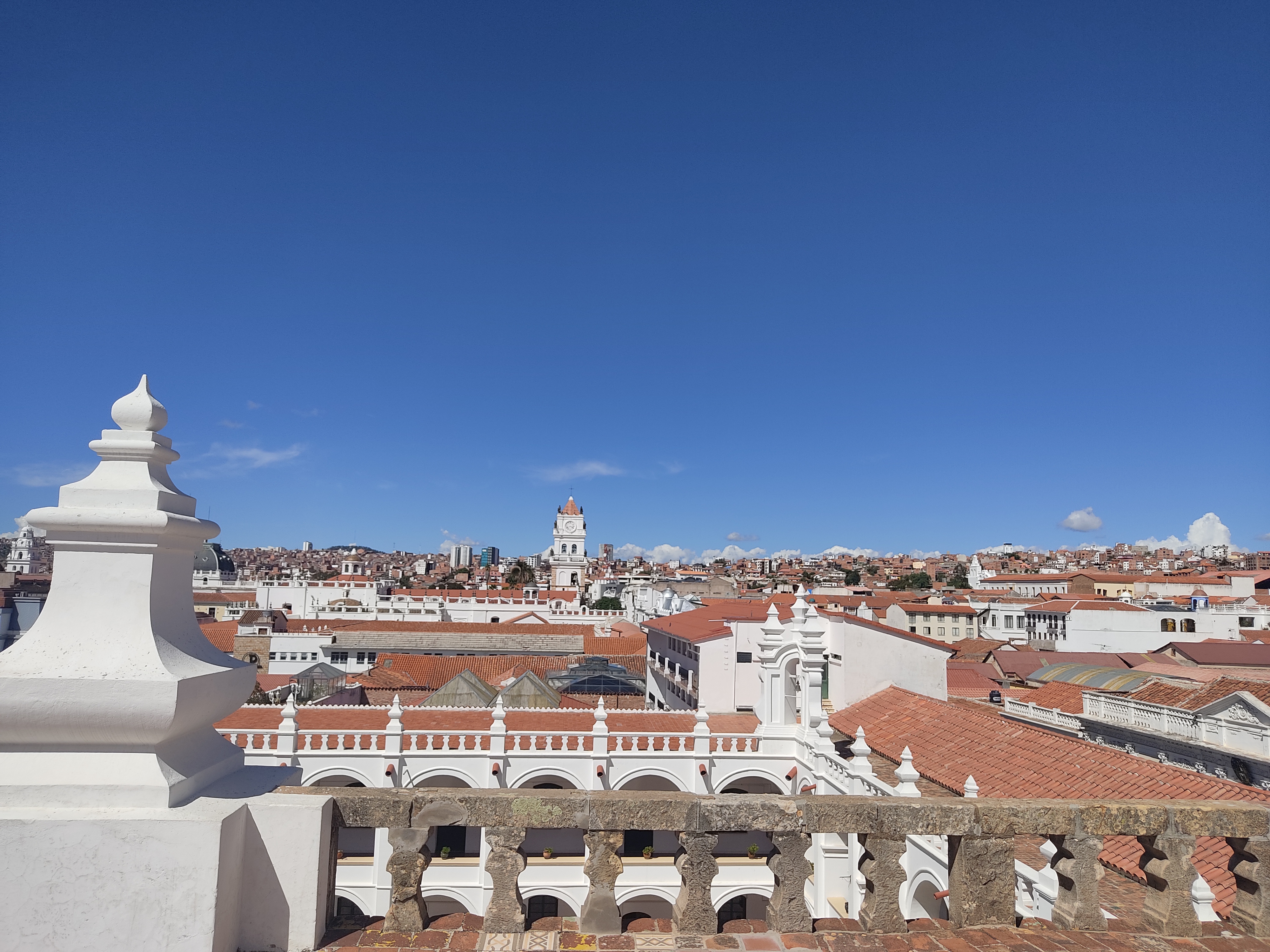 Sucre is the official capital of Bolivia, although it is much smaller than La Paz. Its streets are filled with impressive colonial architecture.
Uyuni
Sucre is the official capital of Bolivia, although it is much smaller than La Paz. Its streets are filled with impressive colonial architecture.
Uyuni Uyuni is a rather small town, but it attracts huge numbers of tourists who come to visit the largest salt flats in the World. The surrounding area is also full of volcanoes, lagoons, and rock formations
Uyuni is a rather small town, but it attracts huge numbers of tourists who come to visit the largest salt flats in the World. The surrounding area is also full of volcanoes, lagoons, and rock formations
Copacabana
We crossed the border into Bolivia at lake TiticacaLake Titicaca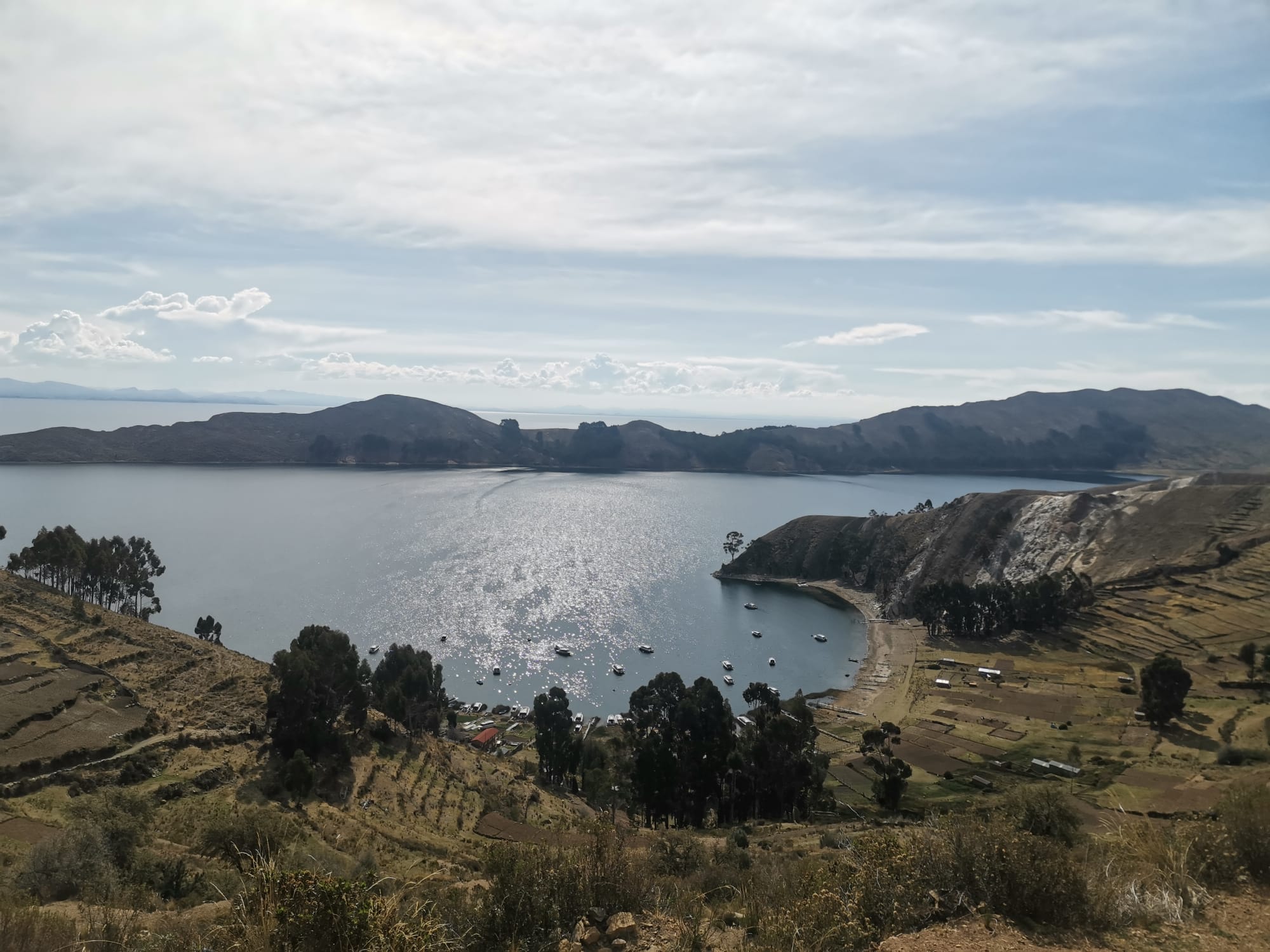 Lake Titicaca is the highest navigable lake in the World. It lies on the border of Peru and Bolivia, and so is a common border crossing point. The lake is incredibly peaceful and is home to a few groups of indiginous people who still preserve their ancient traditions., arriving at the small town of Copacabana. When they weren't taking part in the crazy car-blessing ceremoniesCar Blessing Ceremonies
Lake Titicaca is the highest navigable lake in the World. It lies on the border of Peru and Bolivia, and so is a common border crossing point. The lake is incredibly peaceful and is home to a few groups of indiginous people who still preserve their ancient traditions., arriving at the small town of Copacabana. When they weren't taking part in the crazy car-blessing ceremoniesCar Blessing Ceremonies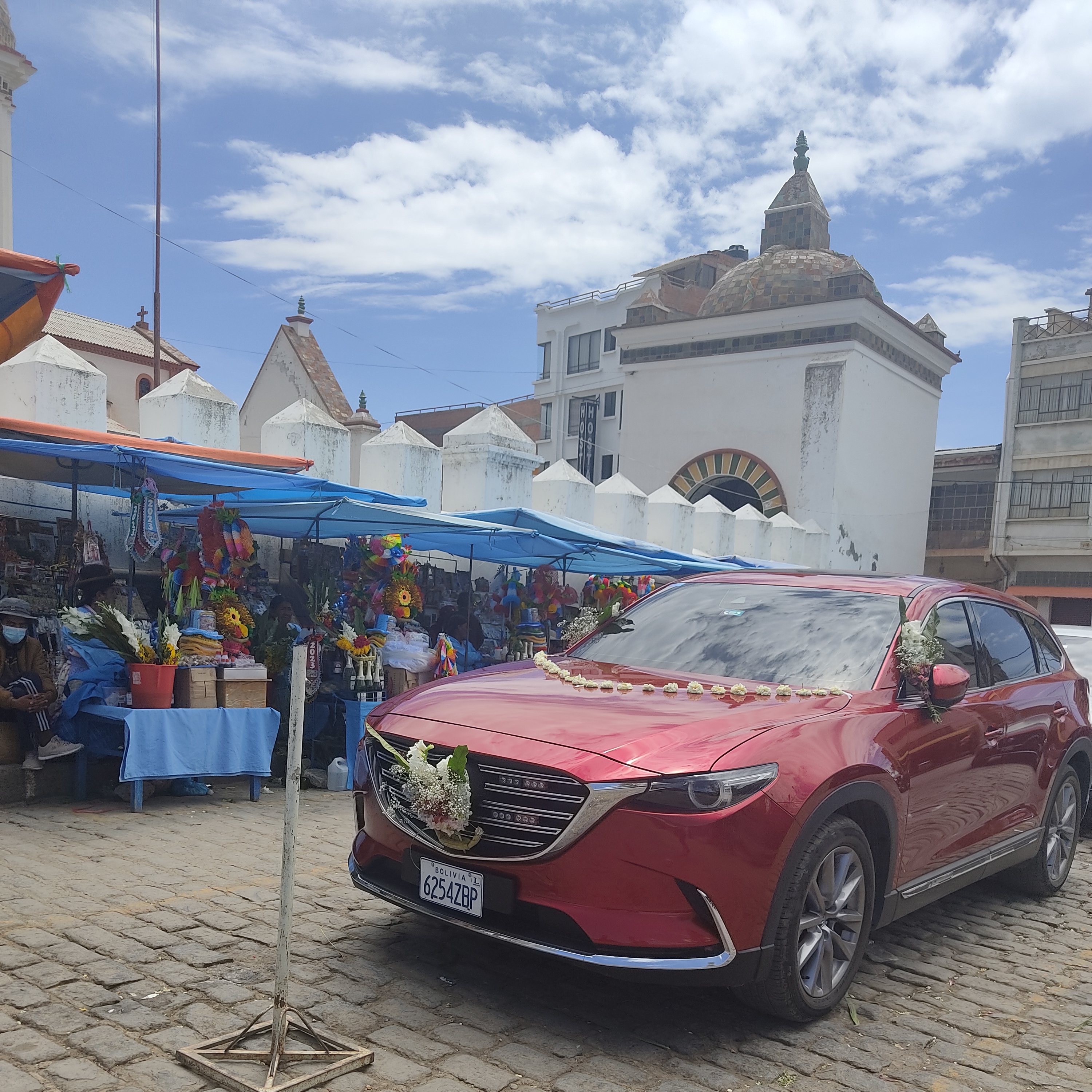 The quiet town of Copacabana is home to one of the most bizarre traditions. Bolivians from all over the country drive their newly-purchased cars here to have them decorated in flowers and garlands before being blessed by the priest infront of the church., the locals were very laid-back, and so we followed suit and enjoyed relaxing afternoons overlooking the calm lake, sampling local foods, and watching the sunset from the most incredible viewpointCerro Calvario
The quiet town of Copacabana is home to one of the most bizarre traditions. Bolivians from all over the country drive their newly-purchased cars here to have them decorated in flowers and garlands before being blessed by the priest infront of the church., the locals were very laid-back, and so we followed suit and enjoyed relaxing afternoons overlooking the calm lake, sampling local foods, and watching the sunset from the most incredible viewpointCerro Calvario Cerro Calvario is a small hill on the edge of Copacabana. A short but steep hike to the top provides an incredibly detailed view of the whole town, and is ideally positioned to see the sun go down over the lake. in town. From Copacabana, boats depart to the legendary Isla del SolIsla del Sol
Cerro Calvario is a small hill on the edge of Copacabana. A short but steep hike to the top provides an incredibly detailed view of the whole town, and is ideally positioned to see the sun go down over the lake. in town. From Copacabana, boats depart to the legendary Isla del SolIsla del Sol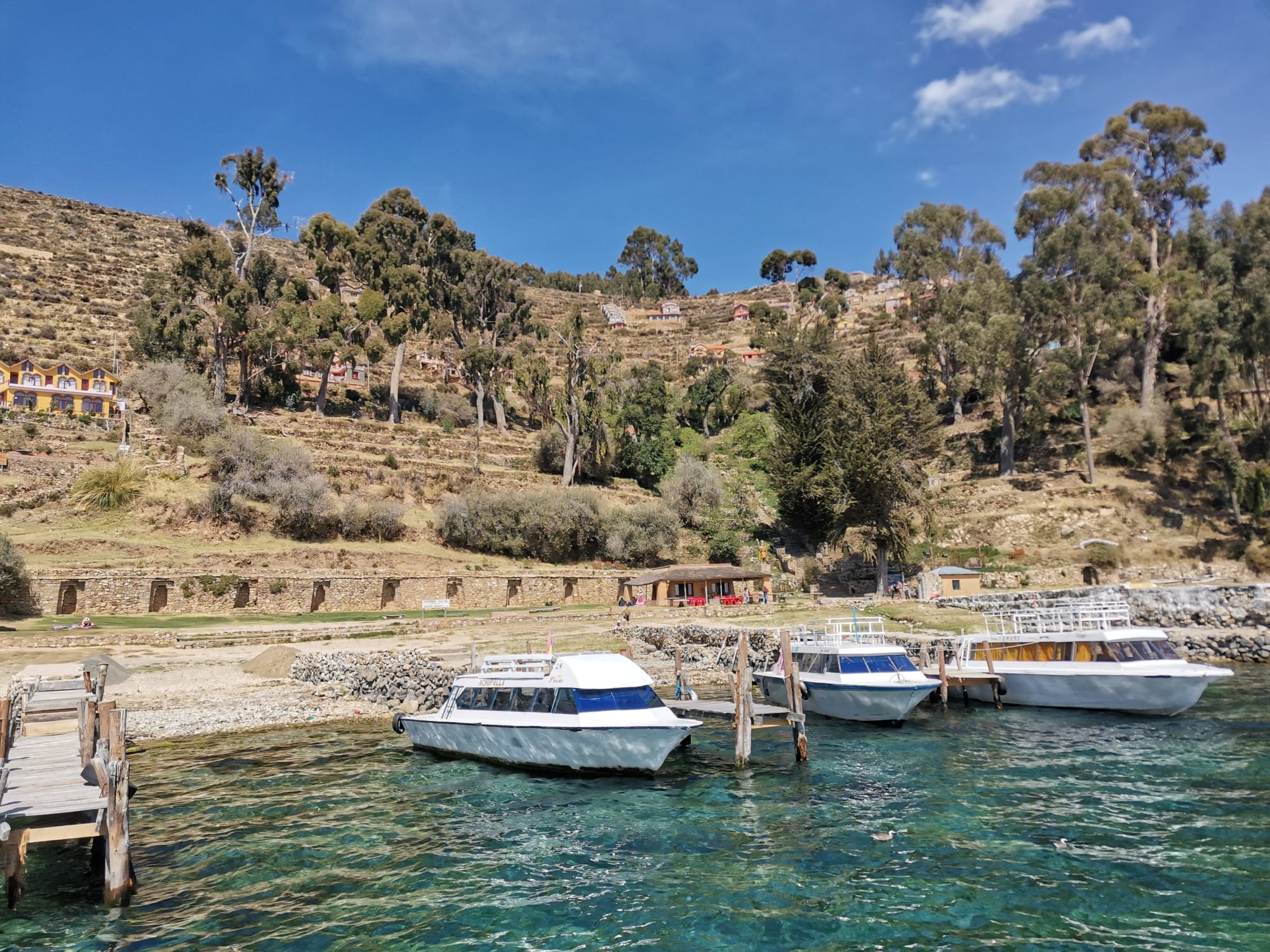 Isla del Sol is a popular island just off the coast of Copacabana. It is quiet and isolated, with the locals using donkeys to transport cargo around the hilly island., a small and peaceful island without motorised traffic or large urban areas. The island provides views over the massive lake and even the Andes mountains in the background. With calm and peaceful beaches, rolling green hills, and ancient Incan ruins, it isn't hard to see why a trip to wild island is often regarded as one of the best things to do in Bolivia.
Isla del Sol is a popular island just off the coast of Copacabana. It is quiet and isolated, with the locals using donkeys to transport cargo around the hilly island., a small and peaceful island without motorised traffic or large urban areas. The island provides views over the massive lake and even the Andes mountains in the background. With calm and peaceful beaches, rolling green hills, and ancient Incan ruins, it isn't hard to see why a trip to wild island is often regarded as one of the best things to do in Bolivia.
La Paz
No visit to Bolivia would be complete without stopping off in the bustling administrative capital of La Paz. Although the huge, sprawling metropolis can seem intimidating at first, it is super easy to navigate using the cable-carsMi Teleferico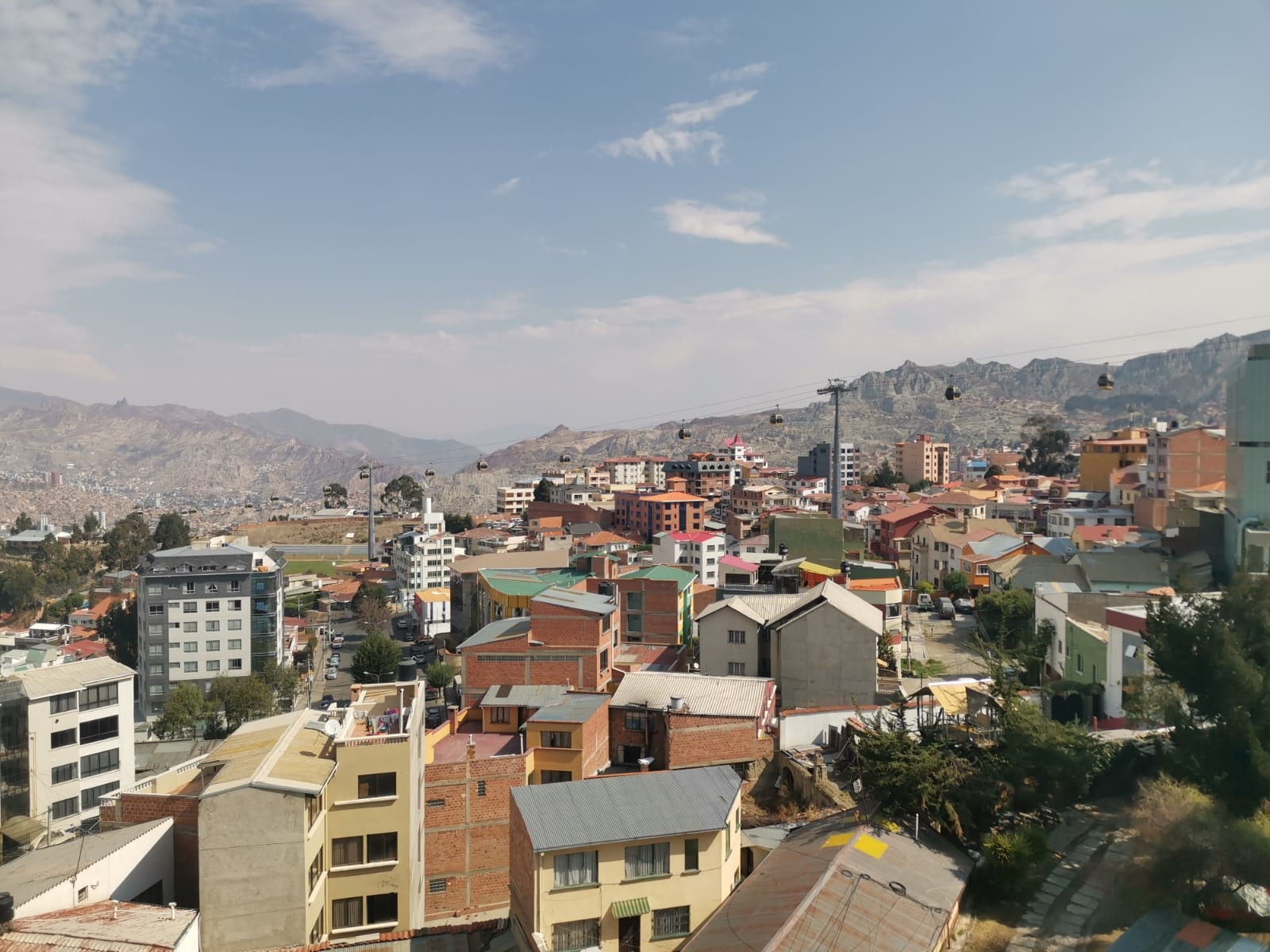 The cable cars, or 'mi teleferico', are the city's creative public transport system. The cable cars silently fly high above the metropolis, connecting distant parts of the city, and have become one of the top activities for tourists to experience in La Paz., which also provide stunning views of the cityscape. Once you look beneath the surface, you will find the city has a fascinating history and is the subject of many intriguing myths and legends. Today, it is a colourful and vibrant place to explore, with rich culture and a unique personality. Every corner is filled with hustling CholitasCholitas are indigenous women of Bolivia, who usually dress in bright multi-layered skirts, mini bowler hats and long, braided hair. or children playing. In the mountains that surround La Laz, the city of El AltoEl Alto
The cable cars, or 'mi teleferico', are the city's creative public transport system. The cable cars silently fly high above the metropolis, connecting distant parts of the city, and have become one of the top activities for tourists to experience in La Paz., which also provide stunning views of the cityscape. Once you look beneath the surface, you will find the city has a fascinating history and is the subject of many intriguing myths and legends. Today, it is a colourful and vibrant place to explore, with rich culture and a unique personality. Every corner is filled with hustling CholitasCholitas are indigenous women of Bolivia, who usually dress in bright multi-layered skirts, mini bowler hats and long, braided hair. or children playing. In the mountains that surround La Laz, the city of El AltoEl Alto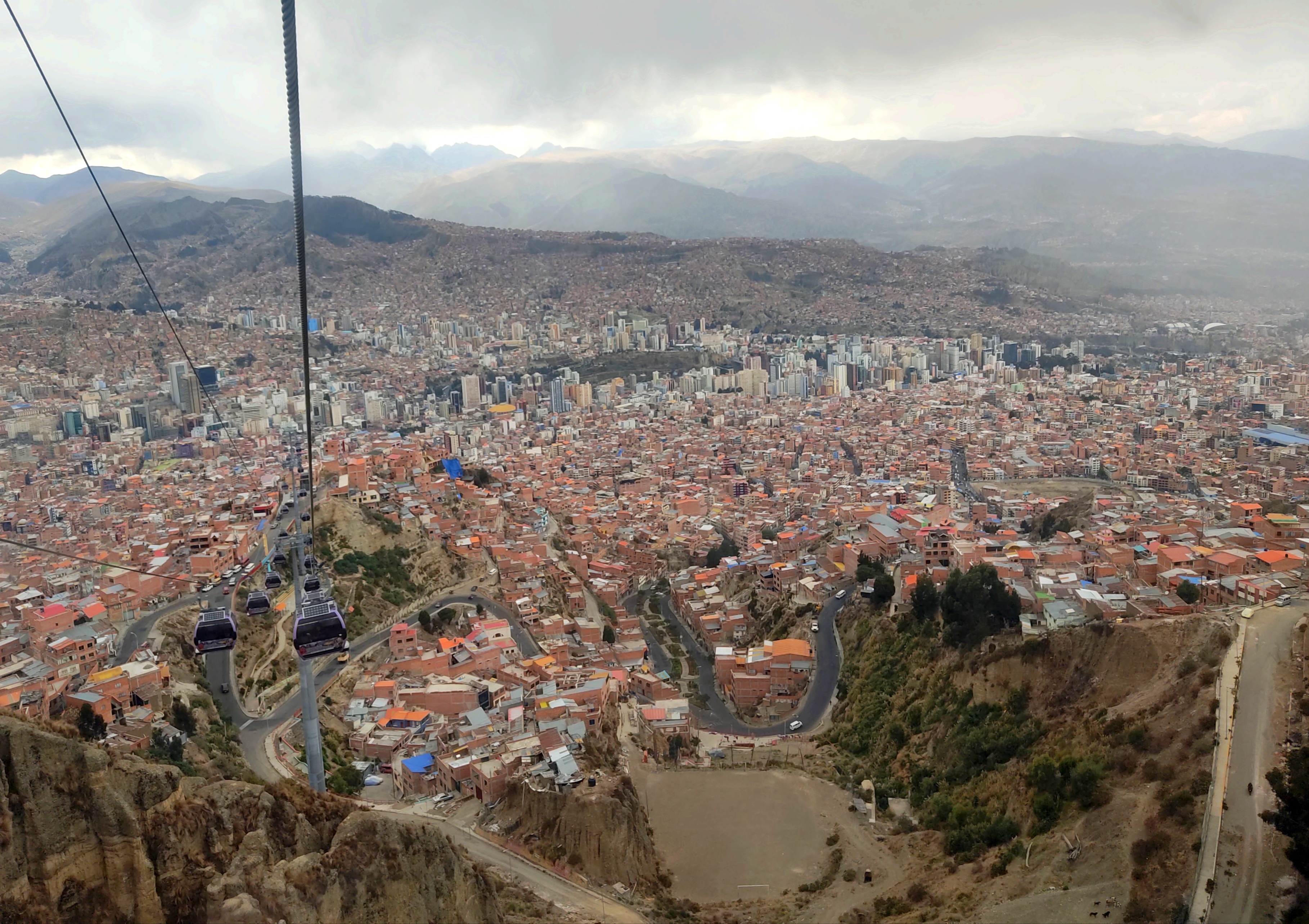 El Alto is the city that sits ontop of the mountains, although the boundary between the two cities is indistinguishable. El Alto is officially the highest city in the World, and is where many of the poorer locals live, while La Paz is the more developed econimic centre. is home to one of the largest markets in the World, where locals barter for a range of goods, and ominous streets where witchcraft is practiced professionally. With the addition of famous day-trips, such as cycling down death roadDeath Road
El Alto is the city that sits ontop of the mountains, although the boundary between the two cities is indistinguishable. El Alto is officially the highest city in the World, and is where many of the poorer locals live, while La Paz is the more developed econimic centre. is home to one of the largest markets in the World, where locals barter for a range of goods, and ominous streets where witchcraft is practiced professionally. With the addition of famous day-trips, such as cycling down death roadDeath Road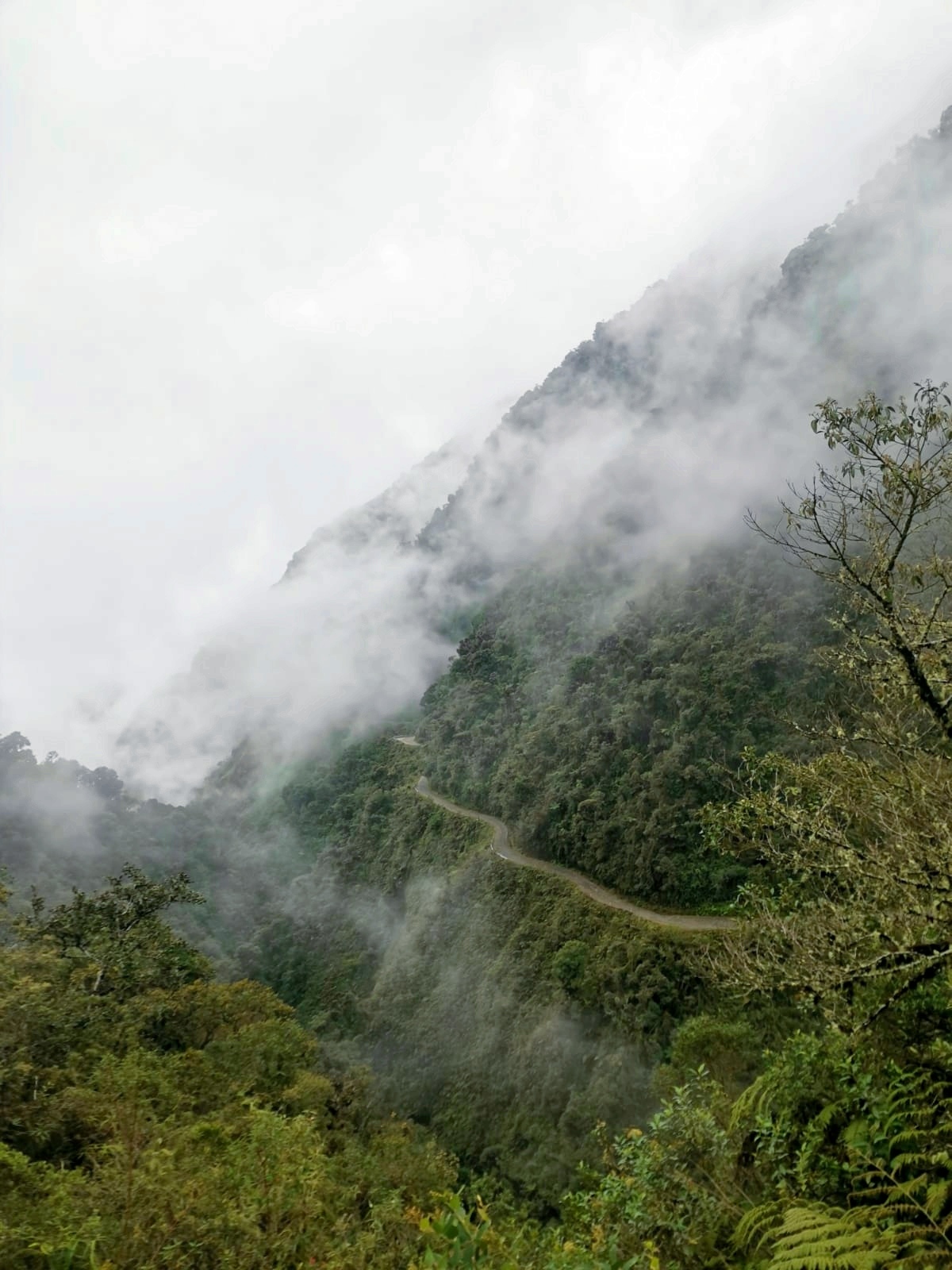 The North Yungas Road, more commonly known as 'Death Road', used to be statistically the most dangerous road in the World. Today, it is closed to motor traffic, so you can take a tour to cycle along the cliffs and appreciate the views over the dense jungle without worrying about dodging vehicles. or visiting valle de la LunaValle de la Luna
The North Yungas Road, more commonly known as 'Death Road', used to be statistically the most dangerous road in the World. Today, it is closed to motor traffic, so you can take a tour to cycle along the cliffs and appreciate the views over the dense jungle without worrying about dodging vehicles. or visiting valle de la LunaValle de la Luna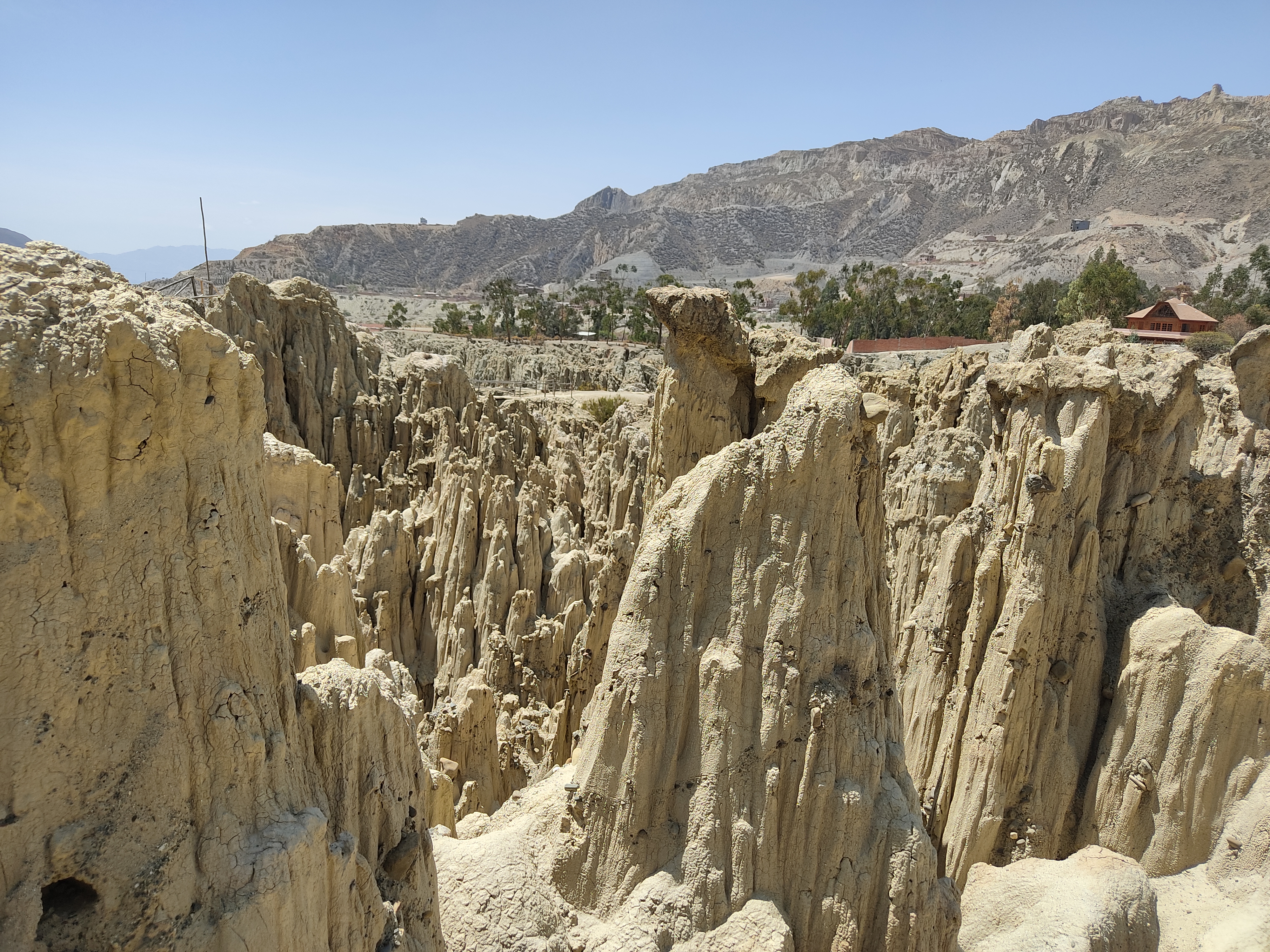 Valle de la Luna is a fascinating valley just outside of La Paz. The numerous pointed rock formations supposedly look just like the surface of the moon. It is a quick and easy day-trip from La Paz., days in La Paz pass in the blink of an eye.
Valle de la Luna is a fascinating valley just outside of La Paz. The numerous pointed rock formations supposedly look just like the surface of the moon. It is a quick and easy day-trip from La Paz., days in La Paz pass in the blink of an eye.
Coroico & Rurrenabaque
Heading north from La Paz, you quickly leave the Andes and descend into hot and humid jungles. Nestled somewhere between the rolling green hills and thick rainforest, is the small town of Coroico. It is the perfect spot to unwind after the busy streets of La Paz, taking in the green surroundings, with the sound of birds calling all around. After some rest and recovery, it was time to head further into the jungle, to Rurrenabaque. This small town is famous among those backpacking South America as Bolivia's gateway to the Amazon rainforest, where you can embark on two different types of tour. In the SalvaThe Salva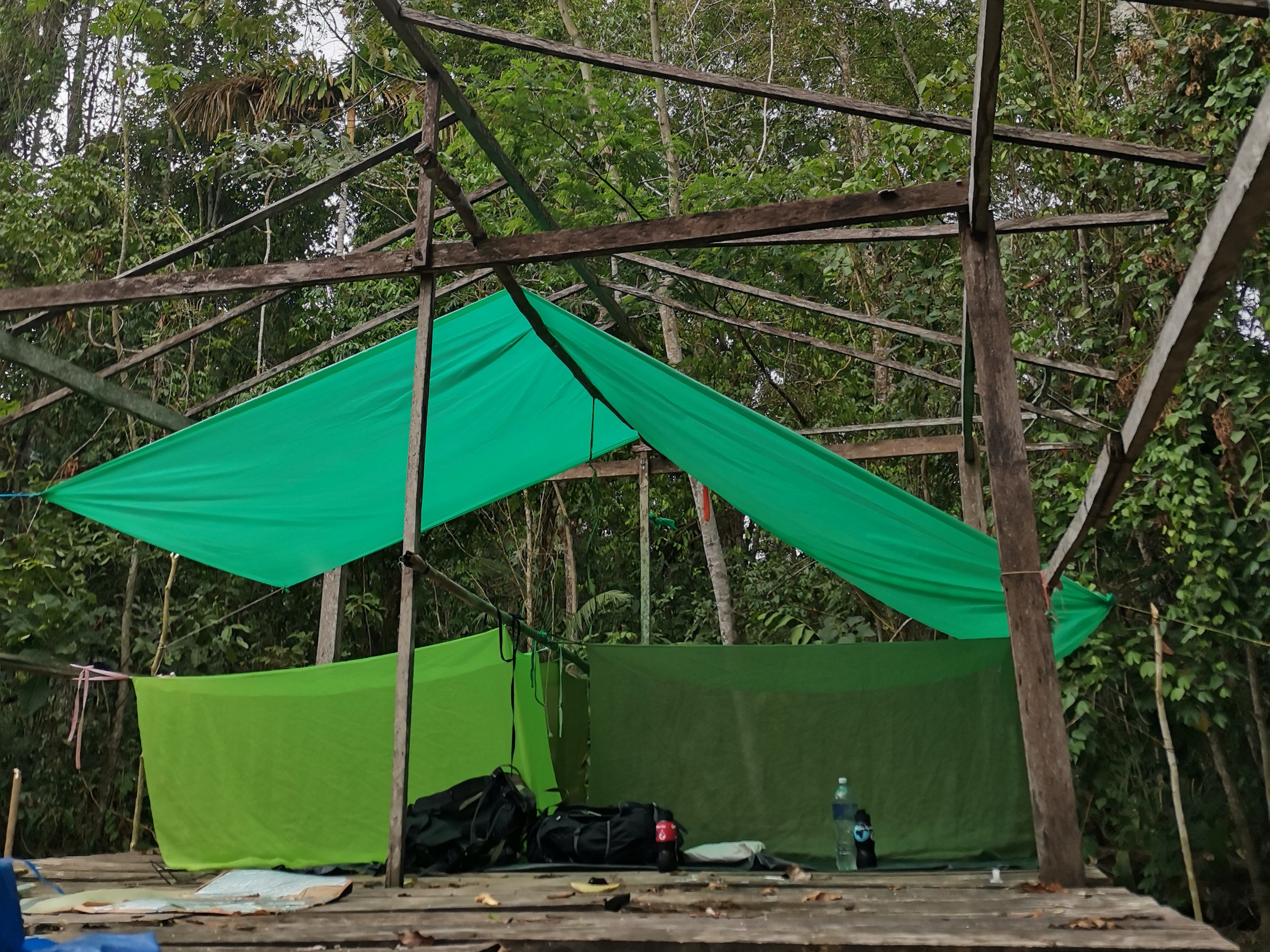 A tour of the Salva, which is the jungle around Rurrenabaque, involves trekking through make-shift paths that cross the dense foliage. Although large animal sightings are rare, there is a huge diversity of plants and insects, which can have medicinal, nutritional, or poisonous uses. you can venture into the thick jungle and immerse yourself in the native fruits and plants, and learn how to use them for survival, as well as which ones to avoid. Alternatively, in the PampasThe Pampas
A tour of the Salva, which is the jungle around Rurrenabaque, involves trekking through make-shift paths that cross the dense foliage. Although large animal sightings are rare, there is a huge diversity of plants and insects, which can have medicinal, nutritional, or poisonous uses. you can venture into the thick jungle and immerse yourself in the native fruits and plants, and learn how to use them for survival, as well as which ones to avoid. Alternatively, in the PampasThe Pampas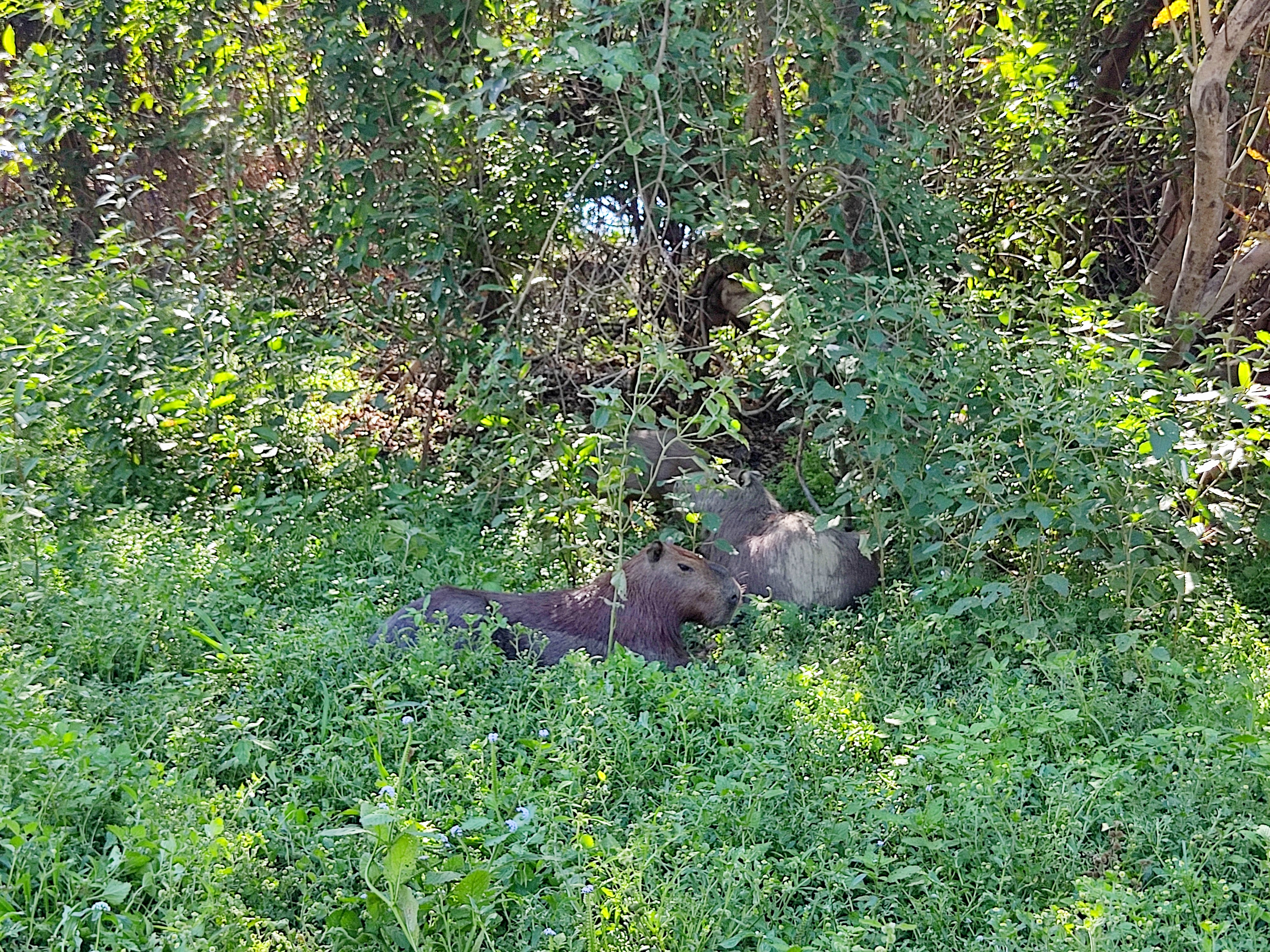 The Pampas is a flat savannah with a river running through it. Here, you can take boat rides along the river to see the animals that live around it, including alligators, tortoises, birds, capybaras, tapirs, anacondas and much more!, you can peacefully drift along the river while alligators watch from the shadows and lazy capybaras bask in the sun. No matter how you choose to spend your time, the Bolivian Amazon will not disappoint, with huge reserves of untampered and unfiltered nature waiting to be discovered.
The Pampas is a flat savannah with a river running through it. Here, you can take boat rides along the river to see the animals that live around it, including alligators, tortoises, birds, capybaras, tapirs, anacondas and much more!, you can peacefully drift along the river while alligators watch from the shadows and lazy capybaras bask in the sun. No matter how you choose to spend your time, the Bolivian Amazon will not disappoint, with huge reserves of untampered and unfiltered nature waiting to be discovered.
Cochabamba & Torotoro
Located roughly in the center of Bolivia, Cochabamba is easy to get to, and a great place to break up the journey from La Paz to Sucre. Although it doesn't have a reputation as a particularly touristy city, Cochabamba certainly has some highlights that make it worth spending a few days, particularly the Cristo de la ConcordiaCristo de la Concordia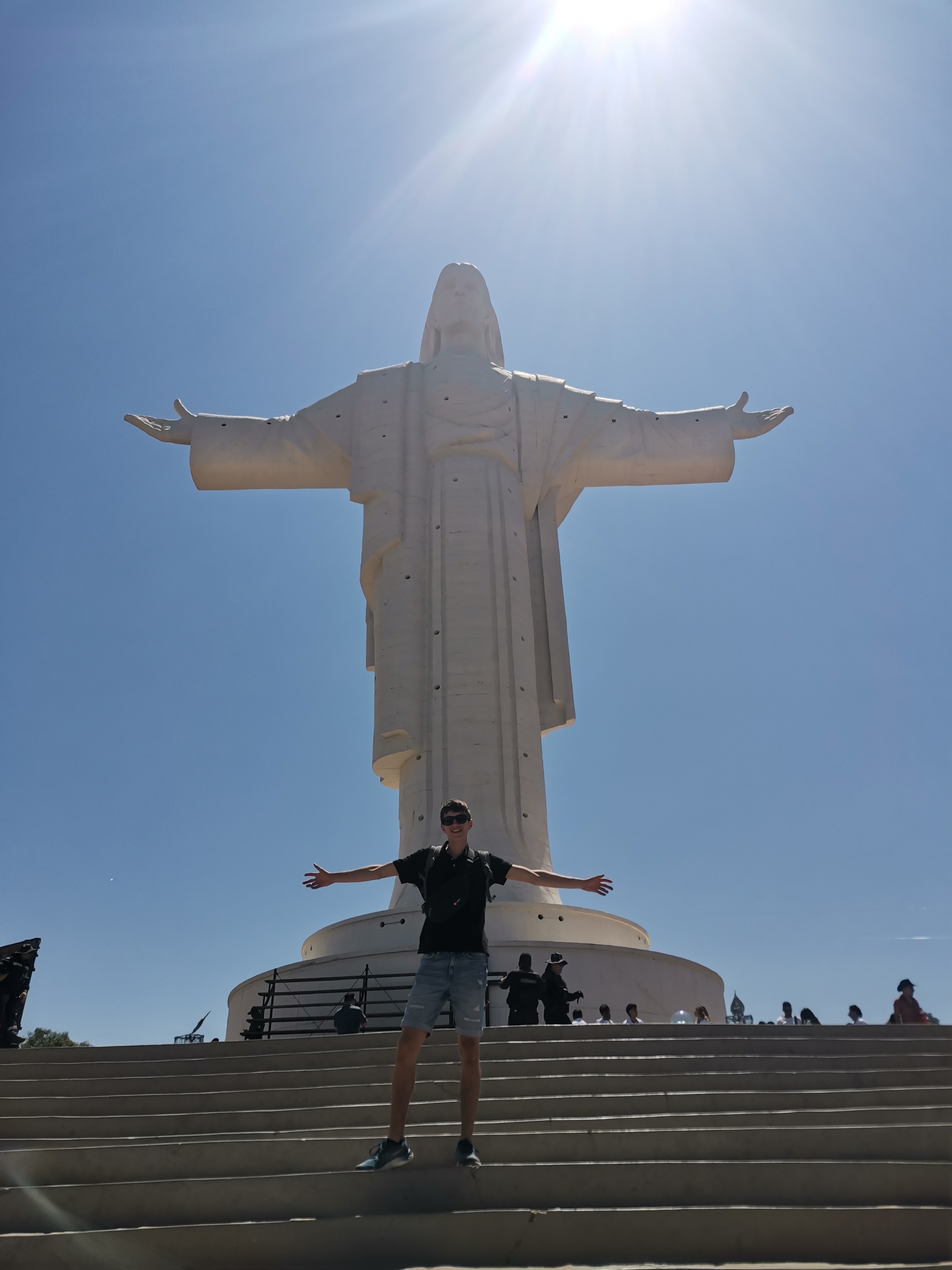 The tallest staue of Jesus Christ in the Americas is actually not the famous Christ the Redeemer in Rio de Janeiro, since this statue in Cochabamba is 44cm taller. Located on the highest hill in the city, the statue provides the best view from Cochabamba.. The main reason to visit, however, is to enable onward travel to Torotoro national park, which is packed with a diverse range of bold and intriguing landscapes. The rugged and vibrant land is littered with footprintsDinosaur footprints
The tallest staue of Jesus Christ in the Americas is actually not the famous Christ the Redeemer in Rio de Janeiro, since this statue in Cochabamba is 44cm taller. Located on the highest hill in the city, the statue provides the best view from Cochabamba.. The main reason to visit, however, is to enable onward travel to Torotoro national park, which is packed with a diverse range of bold and intriguing landscapes. The rugged and vibrant land is littered with footprintsDinosaur footprints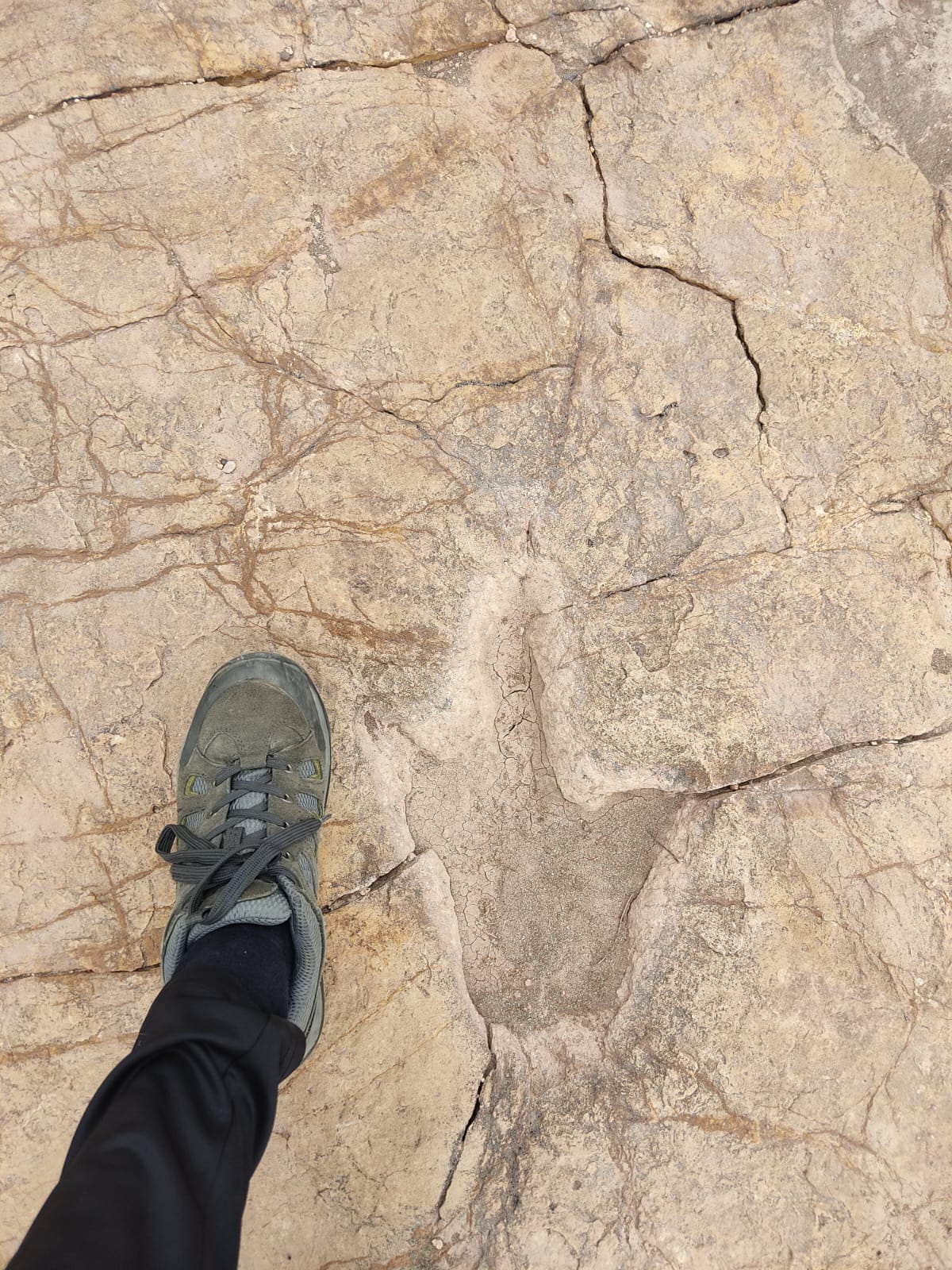 The rocks in Torotoro national park are full of deep prehistoric footprints. Most of the footprints had three clearly-marked toes, were left by carnivores, with there small babies following behind, while a few resembled deep, round craters and belonged to huge sauropods. from the last dinosaurs to roam the Earth, which lead along deep rocky canyonsVergel Canyon
The rocks in Torotoro national park are full of deep prehistoric footprints. Most of the footprints had three clearly-marked toes, were left by carnivores, with there small babies following behind, while a few resembled deep, round craters and belonged to huge sauropods. from the last dinosaurs to roam the Earth, which lead along deep rocky canyonsVergel Canyon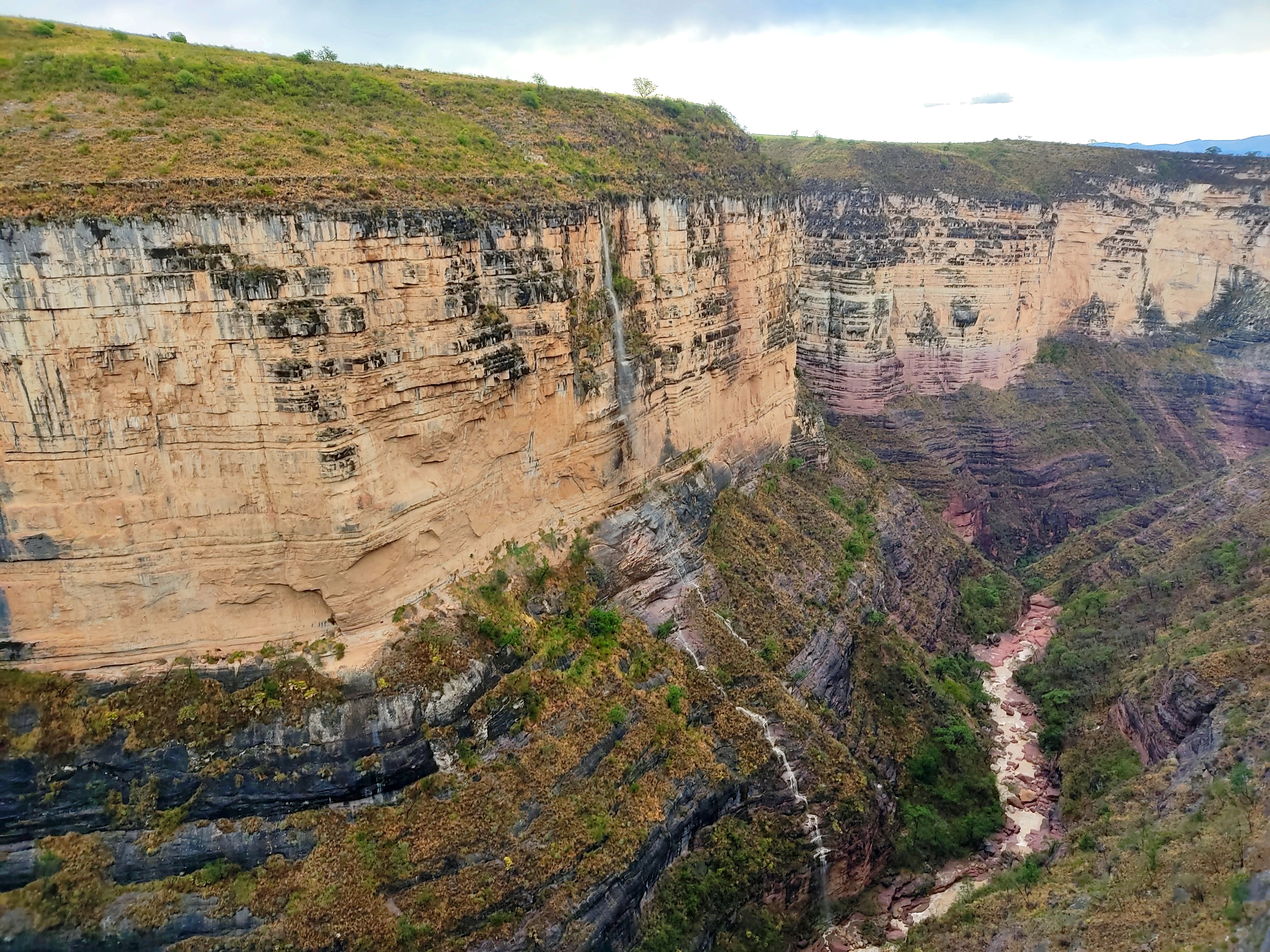 The Vergel canyon is an impressive natural formation, with vibrant colours, steep walls, and waterfalls combining to make an incredible sight. and past cascading waterfalls. The park is also home to dark and eerie caves and beatiful rock formationsCiudad des Itas
The Vergel canyon is an impressive natural formation, with vibrant colours, steep walls, and waterfalls combining to make an incredible sight. and past cascading waterfalls. The park is also home to dark and eerie caves and beatiful rock formationsCiudad des Itas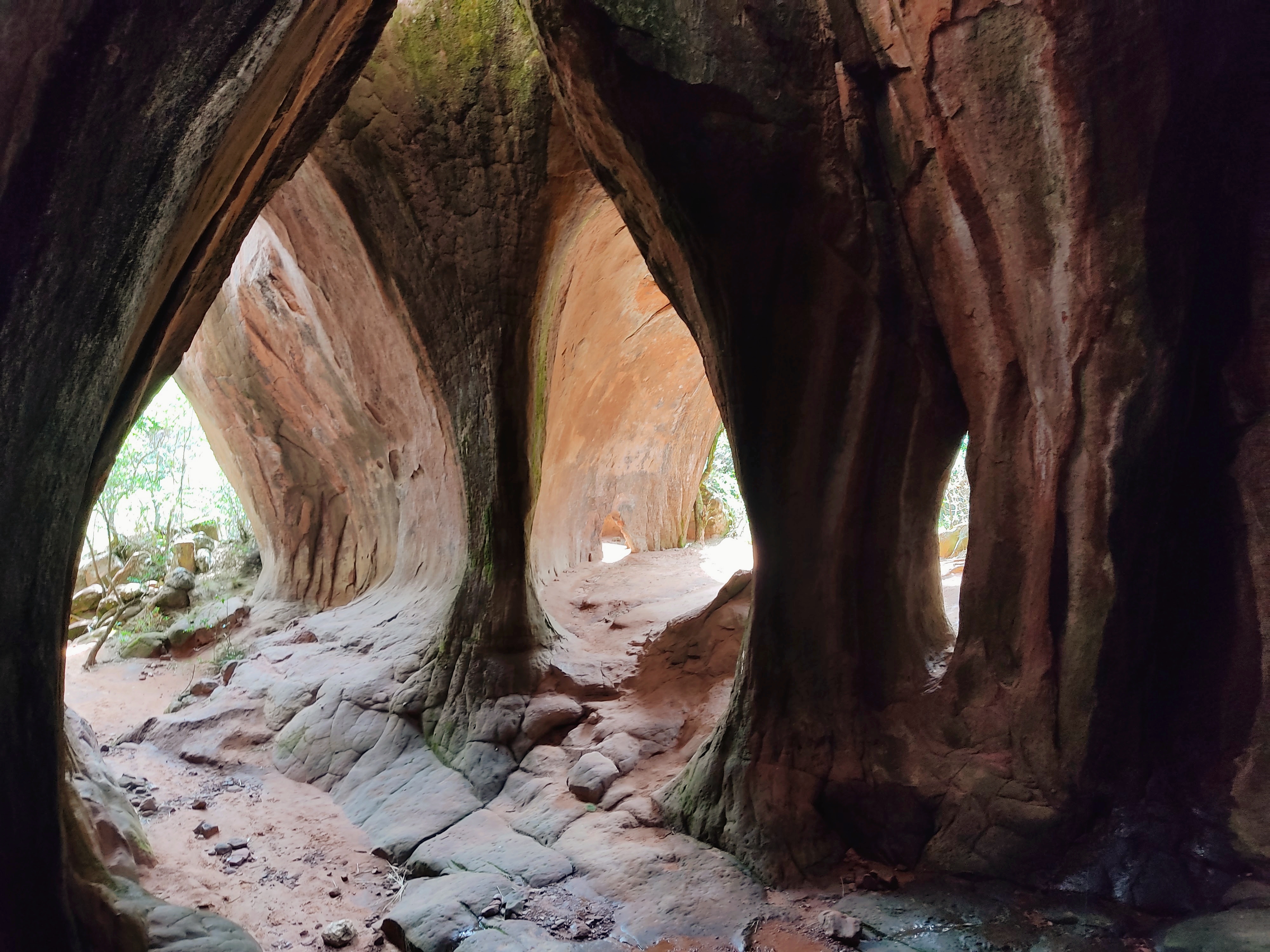 The Ciudad des Itas is a group of rocks in the middle of the open planes, which resemble surreal manmade structures., that have been eroded over centuries to form surreal distorted shapes.
The Ciudad des Itas is a group of rocks in the middle of the open planes, which resemble surreal manmade structures., that have been eroded over centuries to form surreal distorted shapes.
Sucre
It's not the biggest or the most famous city in Bolivia, but Sucre attracts tourists from all over to marvel at it's architecture. The official capital of this country is filled with pristine white buildings, with towering mansions covered in ornate decorations in the centre and quaint little cottages lining the cobblestone alleys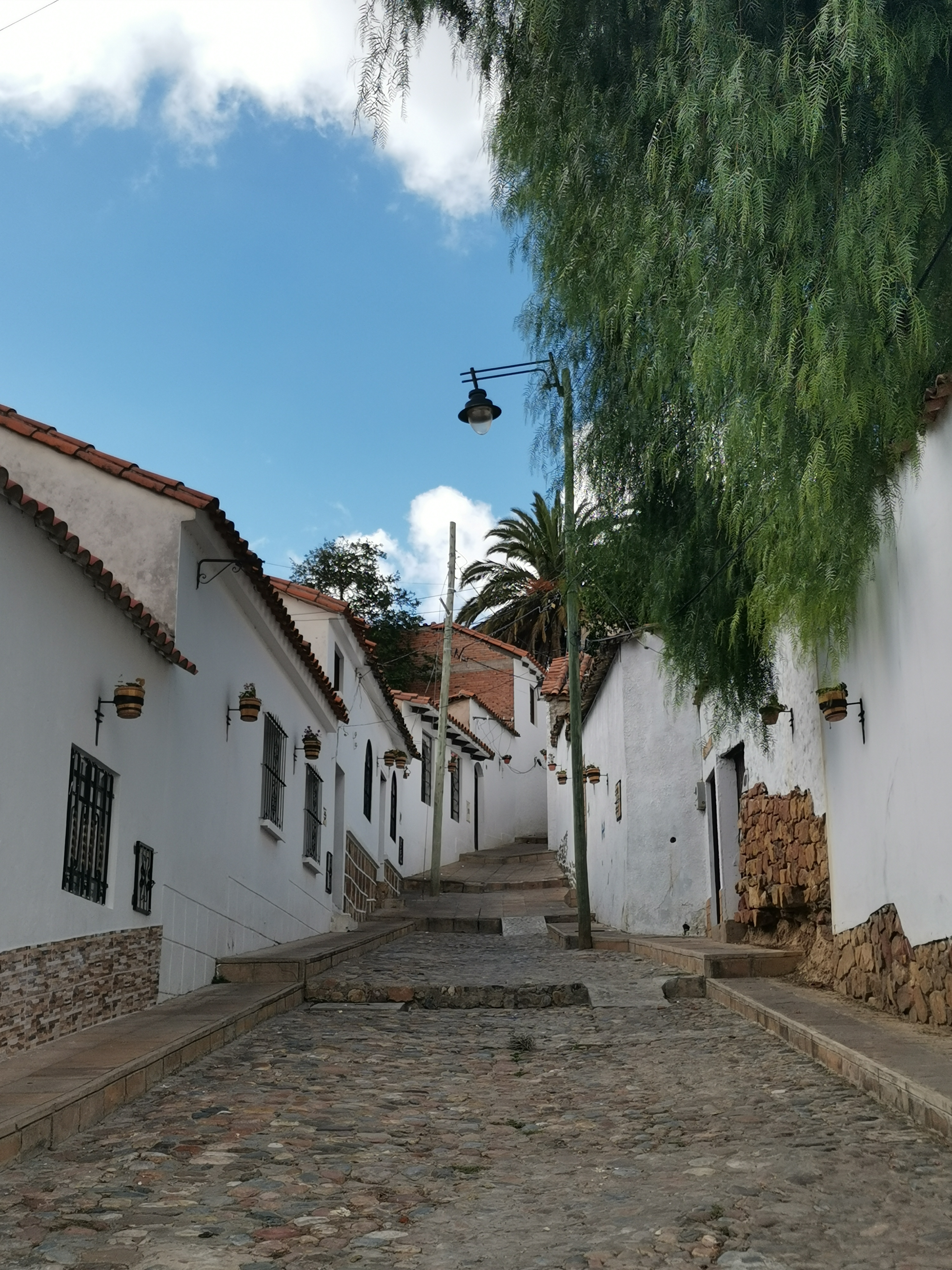 The old streets in the Recoleta neighbourhood make for a hilly, but scenic stroll. of the suburbs. The city is full of European influences, both in the popular restaurants and also the architecture. The pink castle of La GlorietaLa Glorieta
The old streets in the Recoleta neighbourhood make for a hilly, but scenic stroll. of the suburbs. The city is full of European influences, both in the popular restaurants and also the architecture. The pink castle of La GlorietaLa Glorieta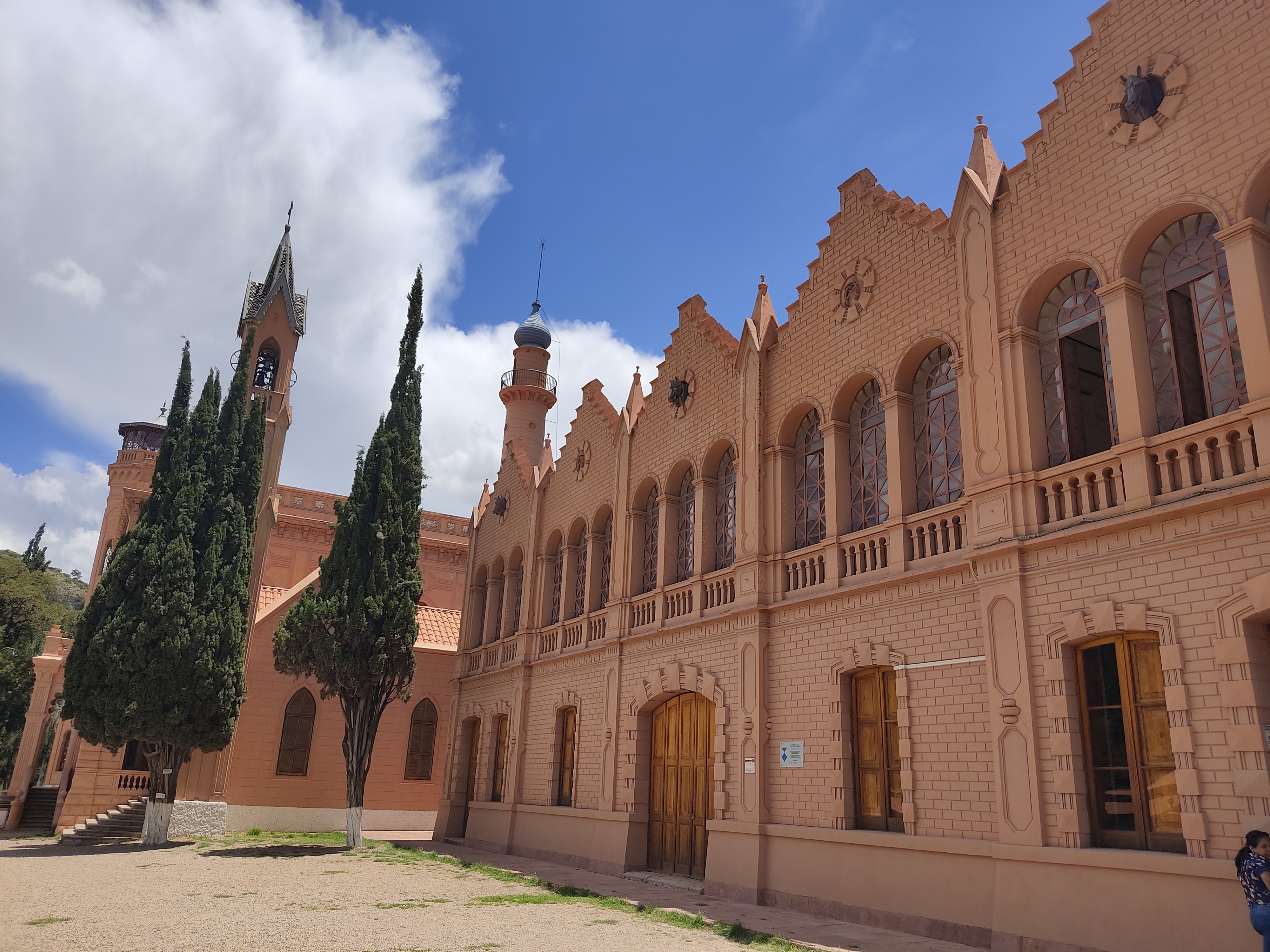 La Glorieta is a palace designed to look like a castle. It uses a mix of different architectural styles, and the tallest tower can be climbed for a panoramic view of the grounds and the surrounding green hills. is a prime example of this, looking like it's been taken straight from a fairy tale. The pristine streets and plazas are perfect for taking a stroll in the sun, or enjoying some streetfood with the laid-back locals, however nothing beats the view from the rooftop of Iglesia de San Felipe de NeriSan Felipe de Neri
La Glorieta is a palace designed to look like a castle. It uses a mix of different architectural styles, and the tallest tower can be climbed for a panoramic view of the grounds and the surrounding green hills. is a prime example of this, looking like it's been taken straight from a fairy tale. The pristine streets and plazas are perfect for taking a stroll in the sun, or enjoying some streetfood with the laid-back locals, however nothing beats the view from the rooftop of Iglesia de San Felipe de NeriSan Felipe de Neri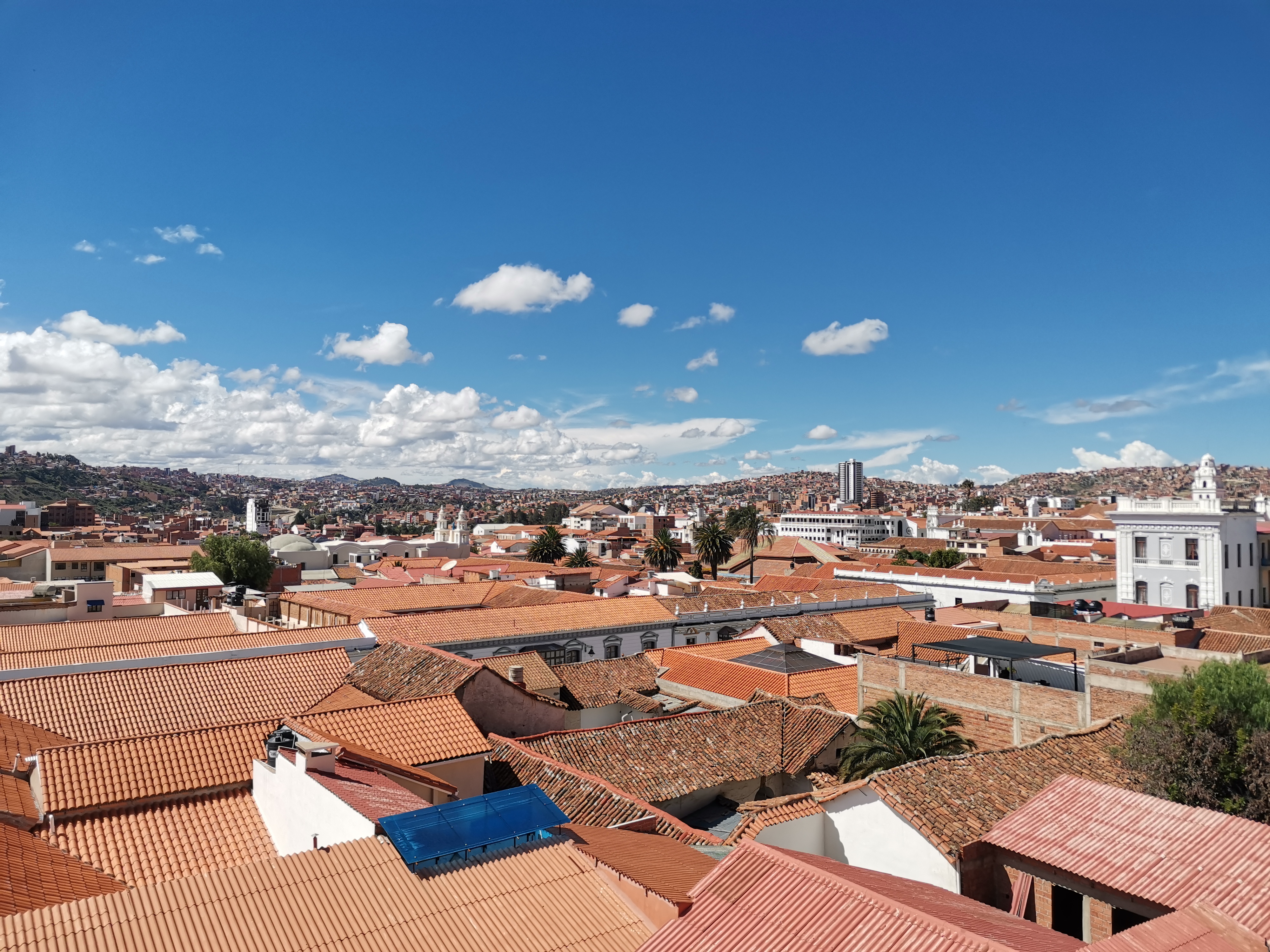 The church of San Felipe de Neri is one of the most popular spots in Sucre. The building is nice, but the real reason people visit is to climb onto the rooftop of the church and look out over the city centre..
The church of San Felipe de Neri is one of the most popular spots in Sucre. The building is nice, but the real reason people visit is to climb onto the rooftop of the church and look out over the city centre..
Salar de Uyuni
The area previously covered by an ancient salt lake is now Bolivia's number one tourist attraction. Although the town of Uyuni is not one of Bolivia's most exciting, the surrounding region certainly is. With an eerie ‘train cemetery’Cementerio de trenes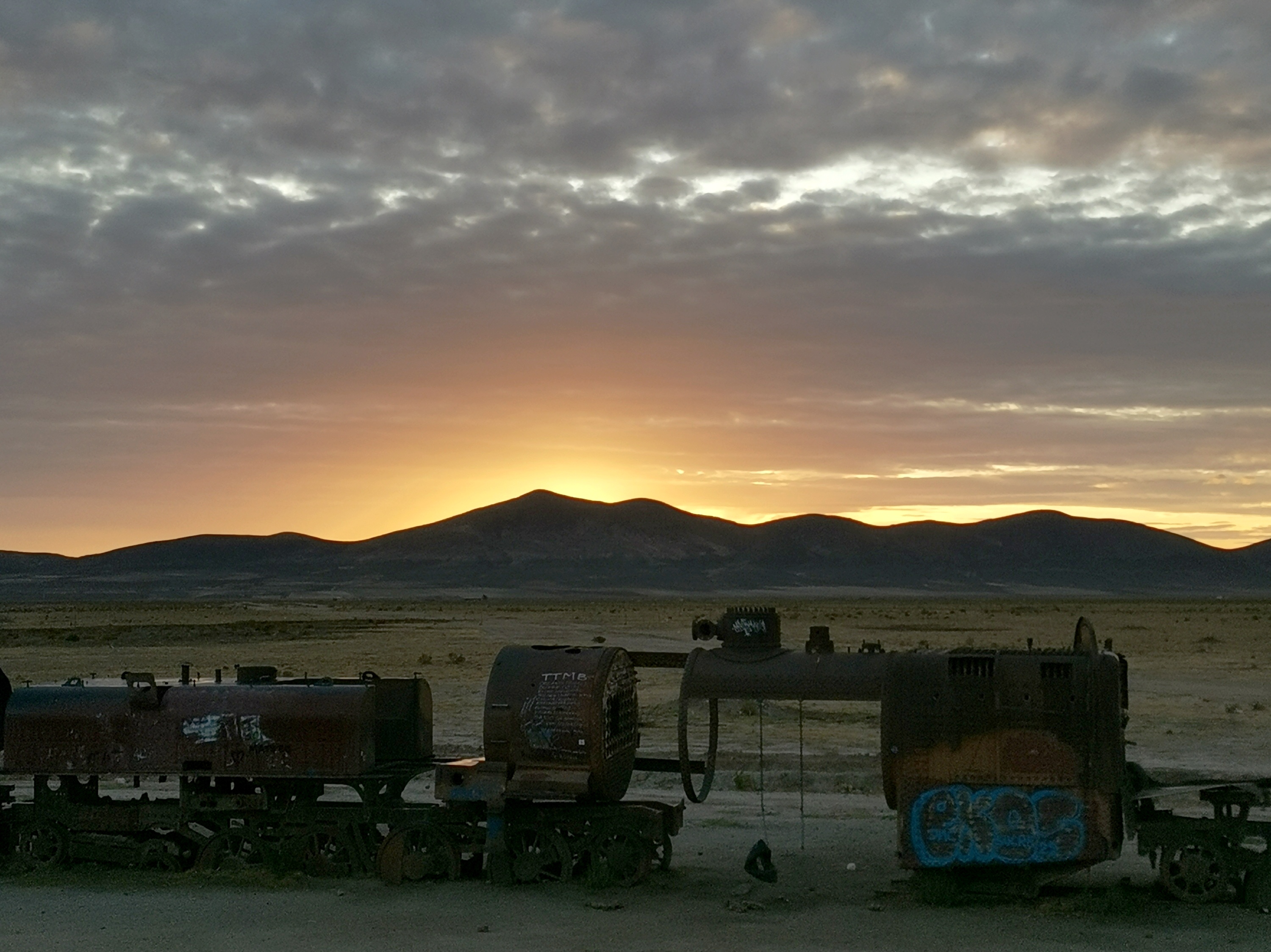 The train cemetery is a key stop on all tours in the salt flats, and is the site where dozens of locomotives lie abandoned in the desert. The area is free to be explored, including the insides and rooftops of the old trains., tall volcanic geysers, nature reserves that are home to countless flamingosFlamingos
The train cemetery is a key stop on all tours in the salt flats, and is the site where dozens of locomotives lie abandoned in the desert. The area is free to be explored, including the insides and rooftops of the old trains., tall volcanic geysers, nature reserves that are home to countless flamingosFlamingos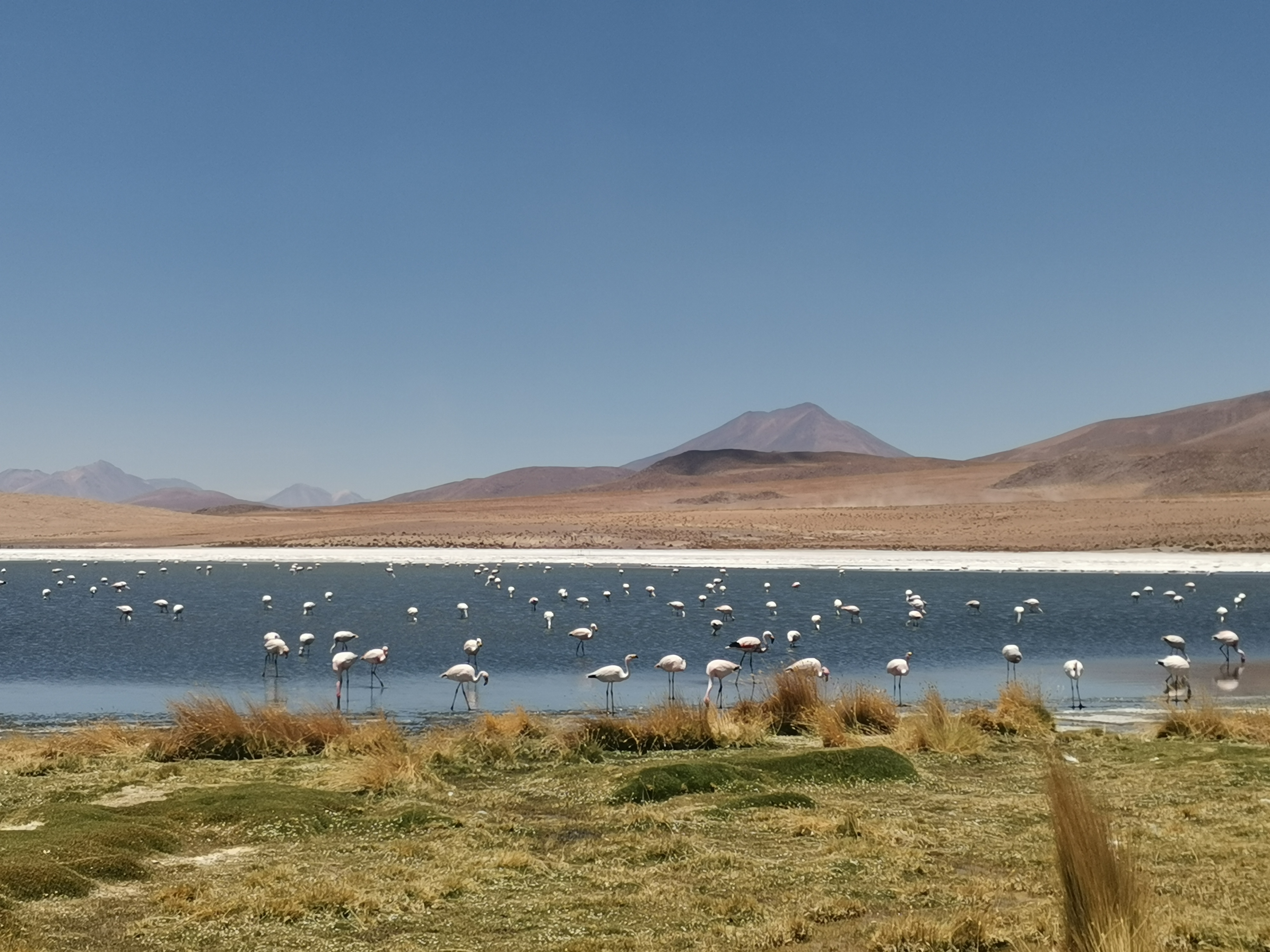 The nature reserve next to the salt flats, and its surrounding areas, are home to thousands of flamingos. 3 different species are represented, and the birds can be seen both from afar and uo close., lagoons with blue, green, or even red water, and relaxing geothermal hot springsThe volcanic activity in the region doesn't only provide amazing landscapes, but also natural phenomenons like the geysers and the steaming hot springs, which are greatly appreciated in the cold mountain climate, there is so much to explore, and that's before we even consider the salt flats themselves. The seemingly endless expanse of flat, white salt feels like being stranded on a disorientating alien planet, and is famous for taking cheesy photosPhotos in the Salt Flats
The nature reserve next to the salt flats, and its surrounding areas, are home to thousands of flamingos. 3 different species are represented, and the birds can be seen both from afar and uo close., lagoons with blue, green, or even red water, and relaxing geothermal hot springsThe volcanic activity in the region doesn't only provide amazing landscapes, but also natural phenomenons like the geysers and the steaming hot springs, which are greatly appreciated in the cold mountain climate, there is so much to explore, and that's before we even consider the salt flats themselves. The seemingly endless expanse of flat, white salt feels like being stranded on a disorientating alien planet, and is famous for taking cheesy photosPhotos in the Salt Flats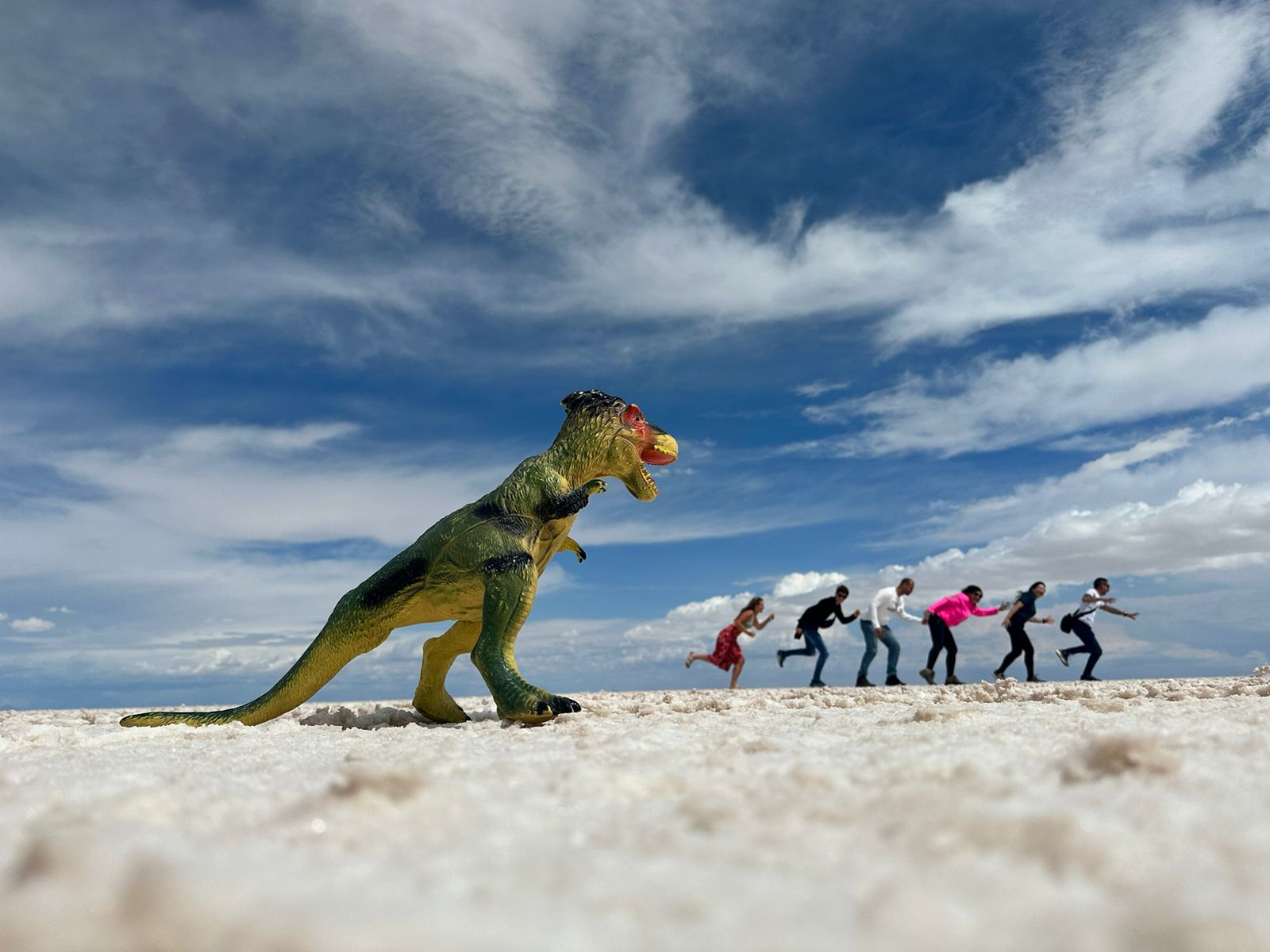 Lining up the perfect shot is harder than it looks, and takes patience and planning. With a bit of creativity and a few props, you can create a range of interesting illusions, but the salt flats are so popular thay it's hard to come up with sonething new.. Although they are a hostile place, the largest salt flats in the World are weirdly peaceful to visit, with absolutely nothing around, enabling you to explore them in complete isolation from everything that lies over the distant horizon.
Lining up the perfect shot is harder than it looks, and takes patience and planning. With a bit of creativity and a few props, you can create a range of interesting illusions, but the salt flats are so popular thay it's hard to come up with sonething new.. Although they are a hostile place, the largest salt flats in the World are weirdly peaceful to visit, with absolutely nothing around, enabling you to explore them in complete isolation from everything that lies over the distant horizon.
Where else can I go in Bolivia?
Despite being limited to 30 days in Bolivia before we needed to extend our stay, we managed to cover all of the most popular tourist spots, except Potosi. This town was once the richest in the World, with the World's largest Silver mines. It still attracts lots of tourists today, who visit to take tours of the mines. However, we were not convinced that these tours were ethical, especially considering the mines are still functional and workers are sent down in dangerous conditions, so we boycotted this town. We also missed the economic hub of Santa Cruz as well as the surrounding jungles. Bolivia's many borders and central location within the continent mean that the route you take through the country largely depends on where you are coming from and going to next. For example, there are towns in the East of the country that tourists often visit en-route to Argentina or Brazil, but since we were heading to Chile we did not visit this part of Bolivia.
It is important to note that Copacabana, La Paz, and Uyuni are located at very high altitudes, and so altitude sickness can cause problems if you have not been at altitude before. To learn how we acclimatised to altitude in Peru, click here.
Transport and Accommodation in Bolivia
Like most of South America, the two main options to get around are by flying or by bus. Despite the online negativity towards Bolivian busses, they are the much cheaper option, and so there was no question on which we were going to opt for.
We were pleasantly suprised to find that the buses work extremely well; they were very comfortable, safe and on-time for the most part, contrary to the rumours we had heard. There is very little information about routes and timetables online, but at every bus station there are multiple companies offering very regular departures between all of the large cities. We were really impressed with the bus transport in Bolivia, and it set the standard for the rest of our trip. Additionally, the prices were the cheapest of every country we visited. Be aware that tickets are a lot less official than other countries and there is always room for negotiations on the price.
For transport between smaller places, colectivos are a great option. These shared vans provide short journeys (up to a few hours) for very cheap prices (up to a few pounds). They have no set schedules, only leaving when they are full which can take a while, so you must have some flexibility. You can also flag them down along their route, and if there is space the driver will pull over and let you board. Typically, locals will wish their fellow passangers a buen día (good morning) when they board/disembark, and it is polite to reply with a smile and a buen día back.
It can be harder to find hostels online in Bolivia, compared to its more touristy neighbours, and the ones that are online are usually not the cheapest. Unlike the rest of South America, very few options offer kitchens, but fortunately eating out is so cheap (see below) so this isn't crucial. However, you might end up getting slightly worse value for money on accommodation than as you do with other things in Bolivia.
Food, Drink and being Vegetarian in Bolivia
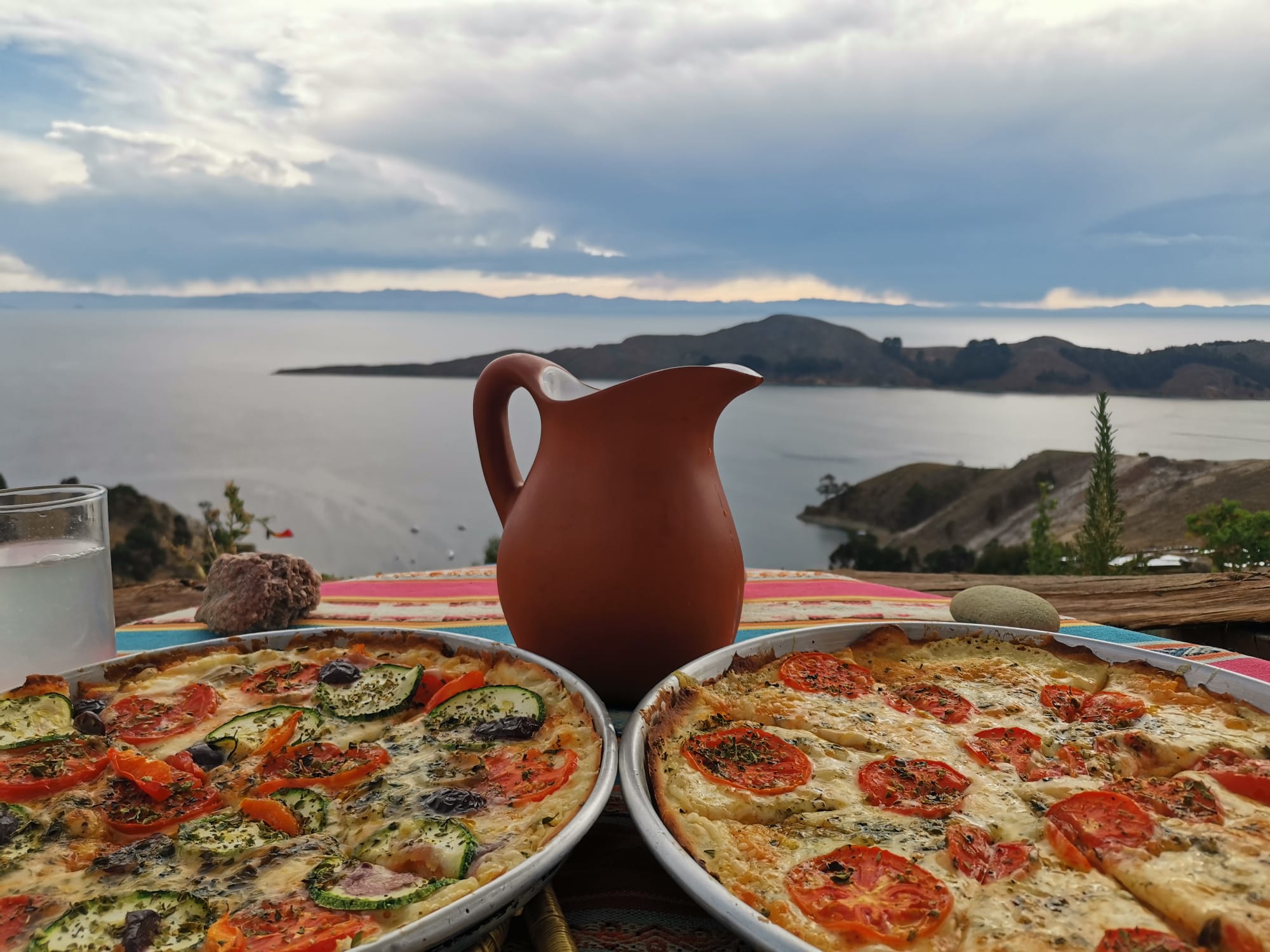
Supermarkets are very few and far between in Bolivia, since all the locals do their shopping at the street markets. Here, you can find the biggest range of fruits and vegetables, both familiar and exotic, but also dried food, cosmetics, and basically anything you would find in a supermarket anyway. Since most hostels don't have kitchens, you will probably be eating out a lot, either in restaurants or from street vendors. Fortunately, food prices in Bolivia are very cheap and options are always plentiful. The best-value way to try a Bolivian meal is buying a menu del diaMenu del Dia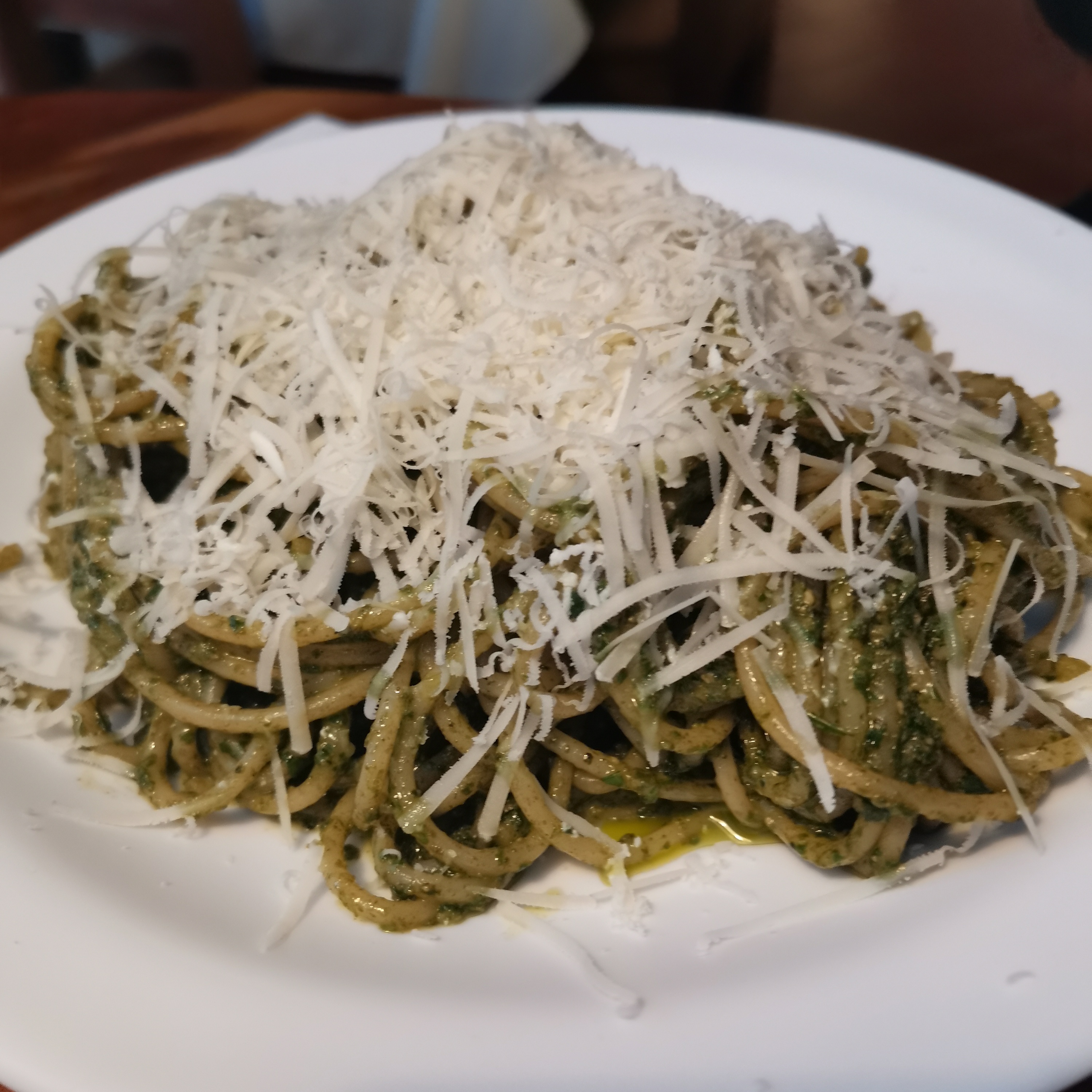 A nenu del dia is a set course served to everyone in the restaurant, for a very cheap price. It usually consists of a soup, a main dish, and a cup of tea. The meal is usually quite basic, such as spaghetti or milanesa and veg, but always very filling!. There are a range of both Bolivian and international restaurants in most cities, many of which serve plenty of vegetarian options such as pizzas,
A nenu del dia is a set course served to everyone in the restaurant, for a very cheap price. It usually consists of a soup, a main dish, and a cup of tea. The meal is usually quite basic, such as spaghetti or milanesa and veg, but always very filling!. There are a range of both Bolivian and international restaurants in most cities, many of which serve plenty of vegetarian options such as pizzas,  Delicious pizzas from an Italian restaurant in Sucre. curries
Delicious pizzas from an Italian restaurant in Sucre. curries A vegan chickpea curry (and veggie burger) from a vegan restaurant in La Paz., nachos
A vegan chickpea curry (and veggie burger) from a vegan restaurant in La Paz., nachos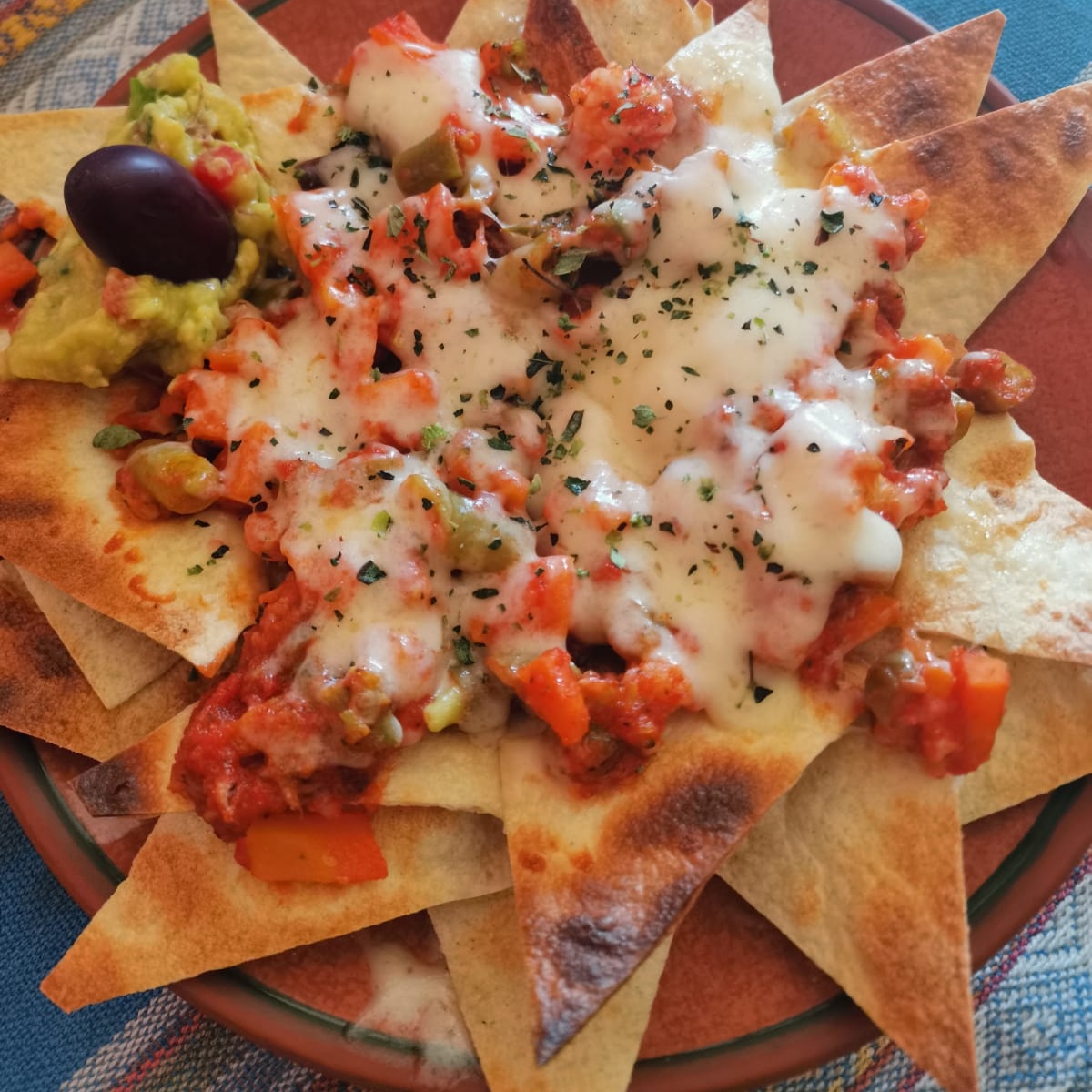 Nachos topped with chillis, beans, tomatoes and guacamole in Copacabana., while sweet pancakes
Nachos topped with chillis, beans, tomatoes and guacamole in Copacabana., while sweet pancakes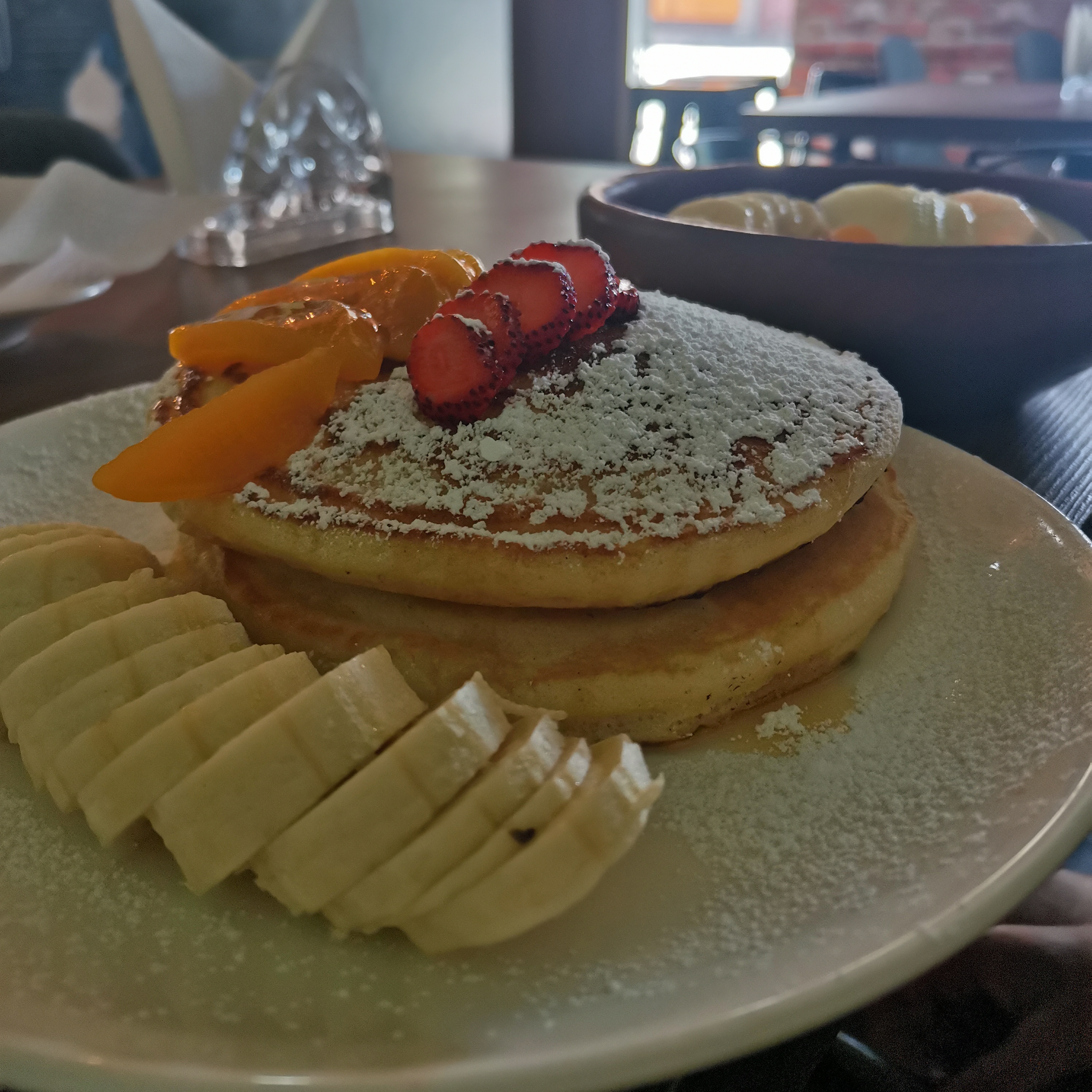 are a popular option for breakfast. In bigger cities like La Paz and Sucre there are plenty of fully vegetarian or vegan restaurants, allowing us to try some traditional dishes like peanut soup and aubergine milanesa.
are a popular option for breakfast. In bigger cities like La Paz and Sucre there are plenty of fully vegetarian or vegan restaurants, allowing us to try some traditional dishes like peanut soup and aubergine milanesa.
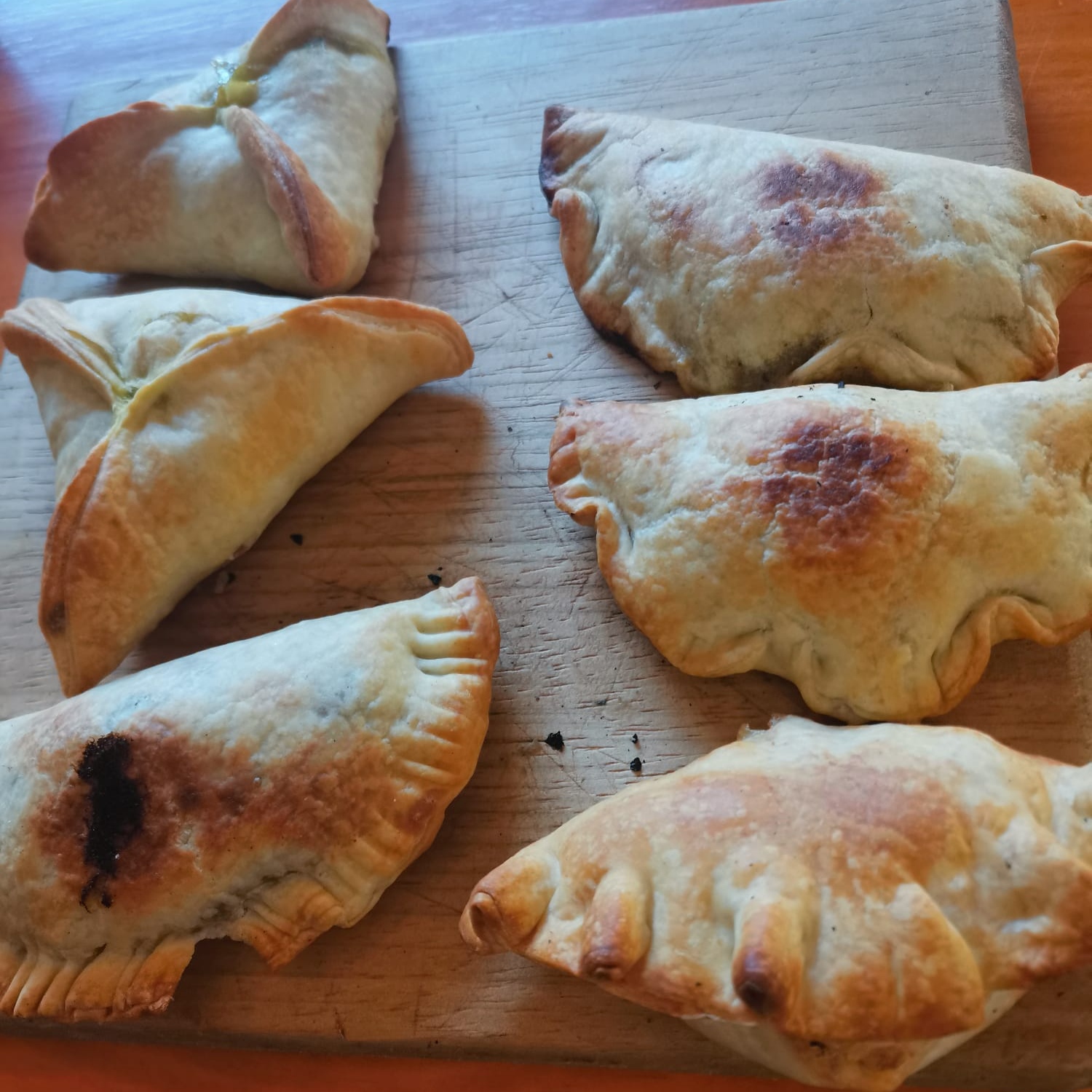
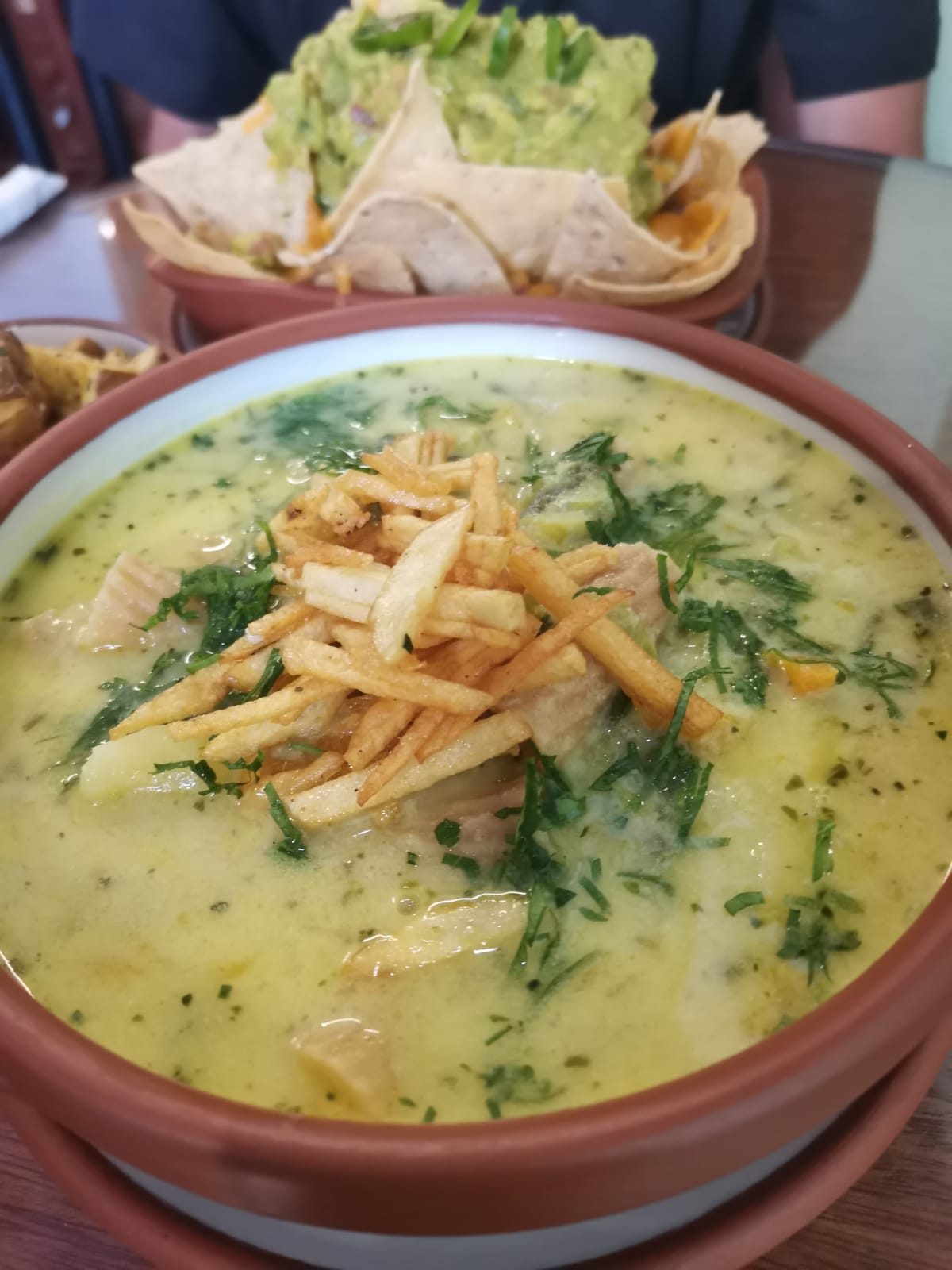
The climate in Bolivia is hot, and spending all day outside can be very tiring and dehydrating. Fortunately, the locals have a perfect solution. Friendly street vendors roam the cities, wheeling carts of delicious refreshments. Some will press fresh orange juice or cut open a coconut for you, while others grind up sugar canes to sell the sweet juice. As well as drinks, the street vendors also sell refreshing slices of melon, pineapple, or watermelon, which are great snacks when you are on the go. Unfortunately we couldn't find a vegetarian version of the most popular street food, the salteña, but we did enjoy a few cheese empanadas too when they were available.
How Expensive is Bolivia?
Bolivia was possibly the cheapest country we visited in South America. The costs of transport and food and drink (a meal at a restaurant, including a starter and drinks, cost around £5-6 per person) are very low, so it is easy to get by on a tight budget. Additionally, most tours and excursions are not as expensive as more touristy countries (as long as you book them in person, rather than booking in advance online). As a result, we were able to live more luxuriously in Bolivia than we did anywhere else, eating out more often and visiting all of the popular tourist spots. Accommodation was the only aspect that ended up being more expensive in Bolivia than in Peru, however it was still very cheap.
| Category | Spending per person |
% of total |
|---|---|---|
| Accommodation | £6.19 per night | 12.2% |
| Transport | £2.65 per 100km by bus | 6.3% |
| Tours and activities | £416 | 45.5% |
| Food & Drink | £4.10/day | 13.5% |
| Other | £13.75 per day | 22.6% |
| Total per day | £30 per person |
We have used these metrics to compare each country we visit. Accommodation costs are an average per person, however this includes some nights spent in private double rooms, which would be more expensive for solo travellers. Transport value reflects the average amount we paid per 100km travelled via bus, which is 1hr of travel at 62mph (100kmph). This does not include the cost of taxis used to travel within cities. Tours and activities includes entrance fees and travel costs to/from tourist attractions, and can vary greatly depending on the type of activity. Food and Drink includes both meals at restaurants, street foods and snacks, and groceries used to cook in hostels (but does not include food included as part of a tour or breakfast included in the price of accommodation.
Overall, Bolivia was under our budget of £33 per person per day, and could be done cheaper if you have a tighter budget.
